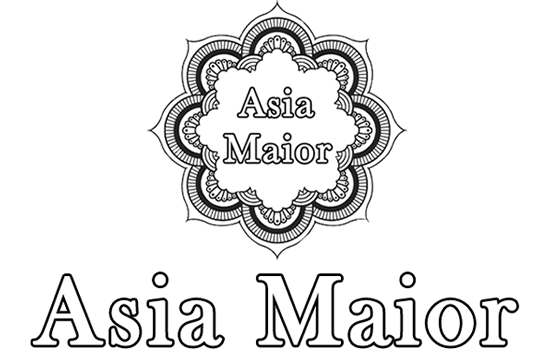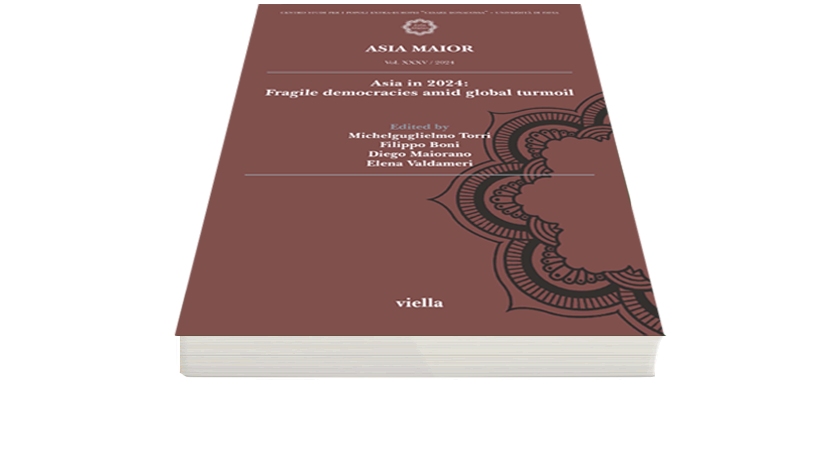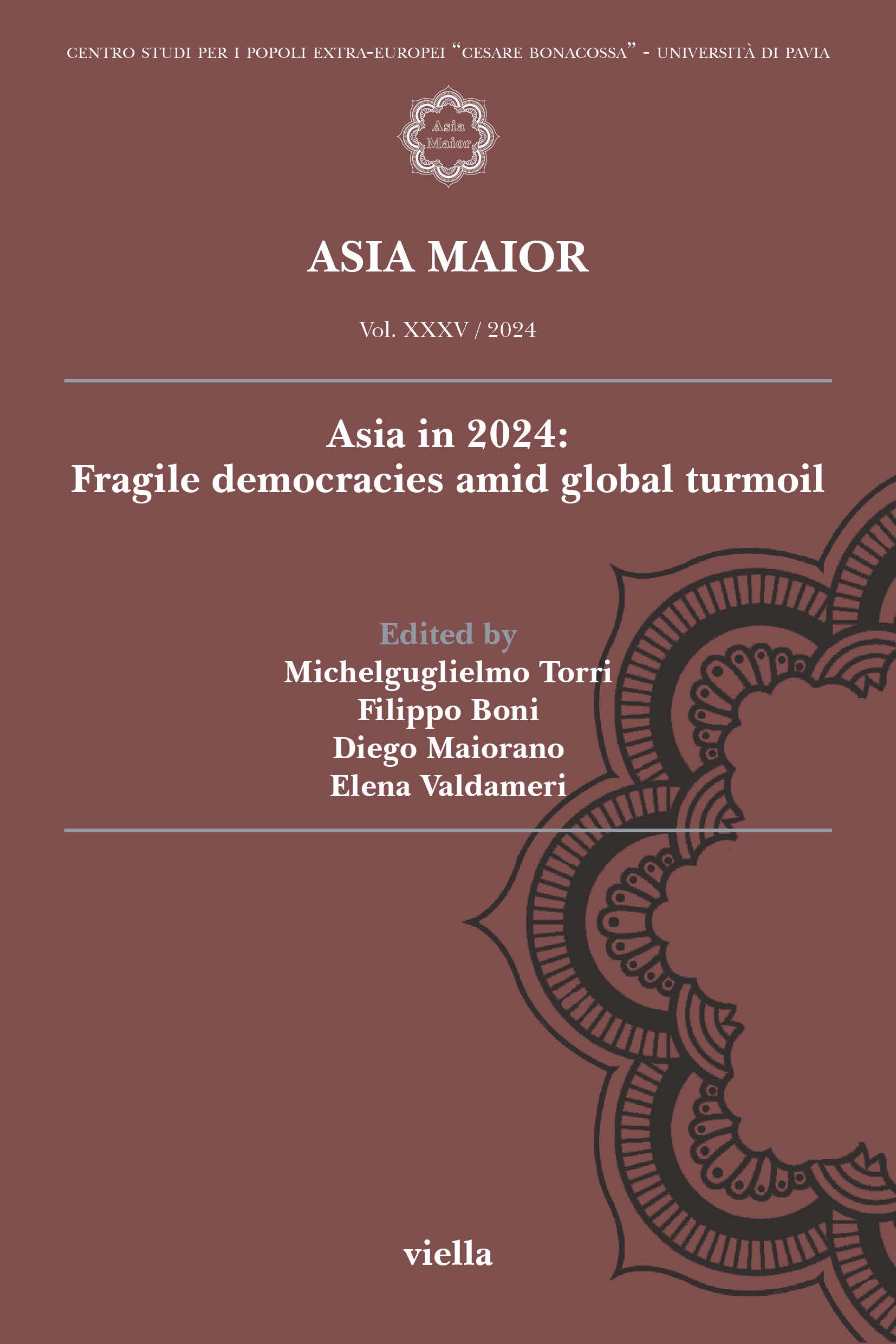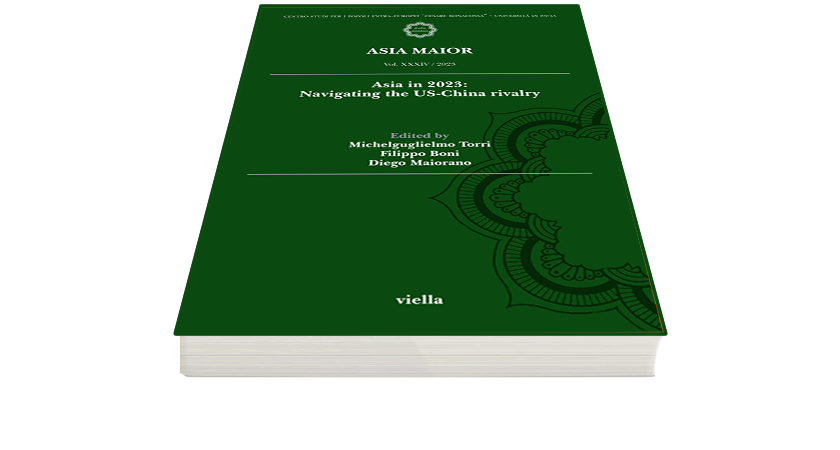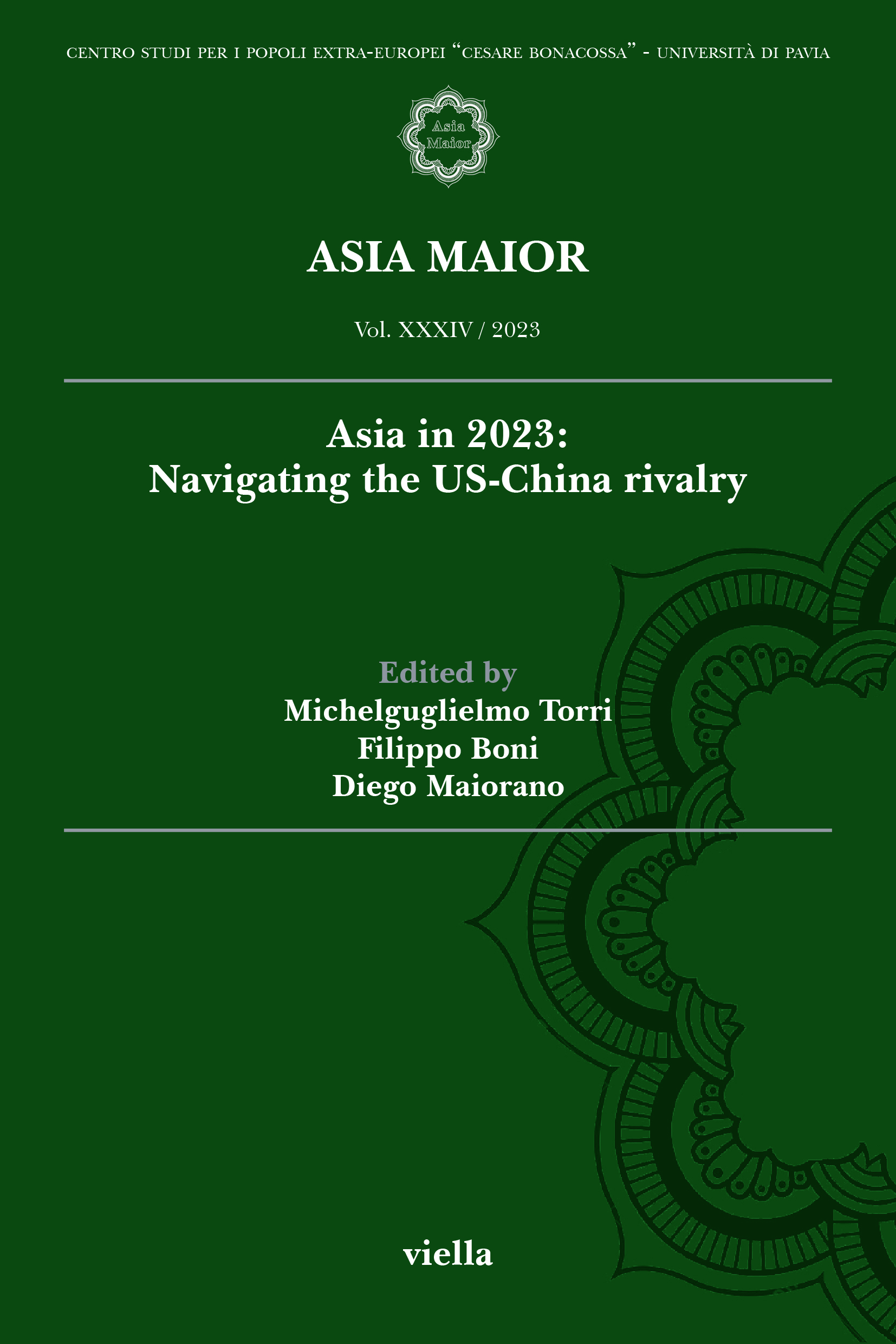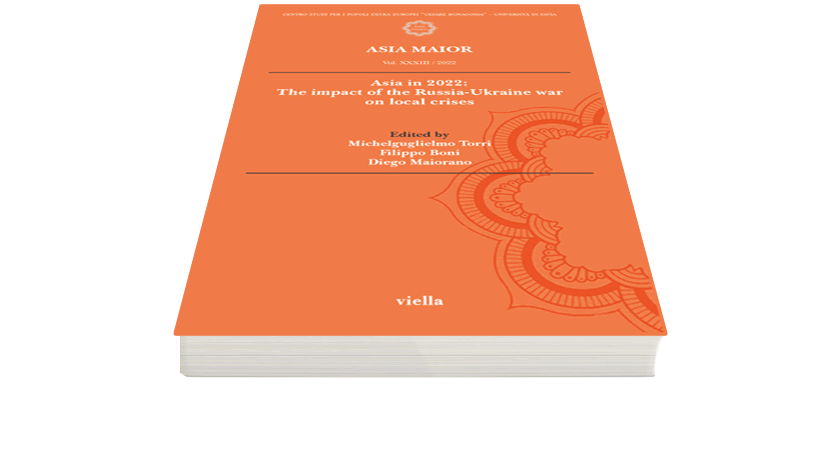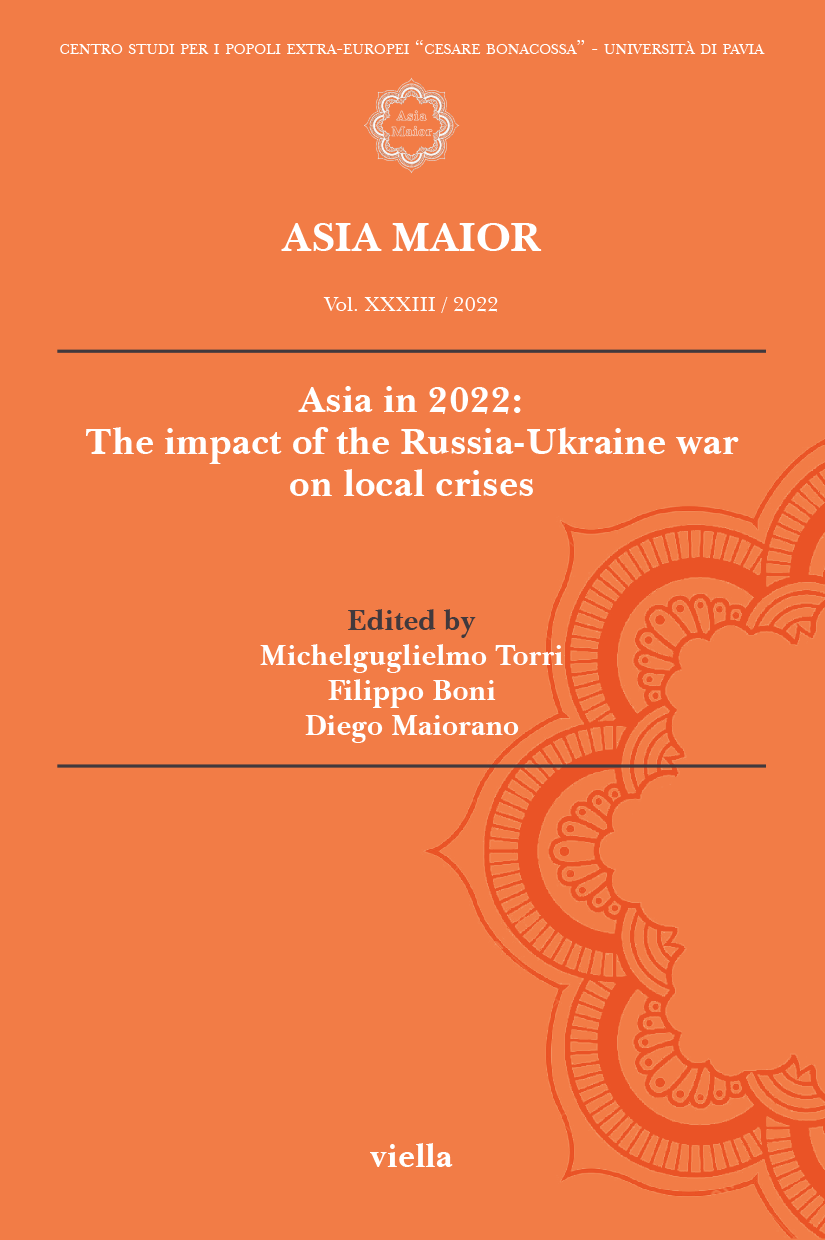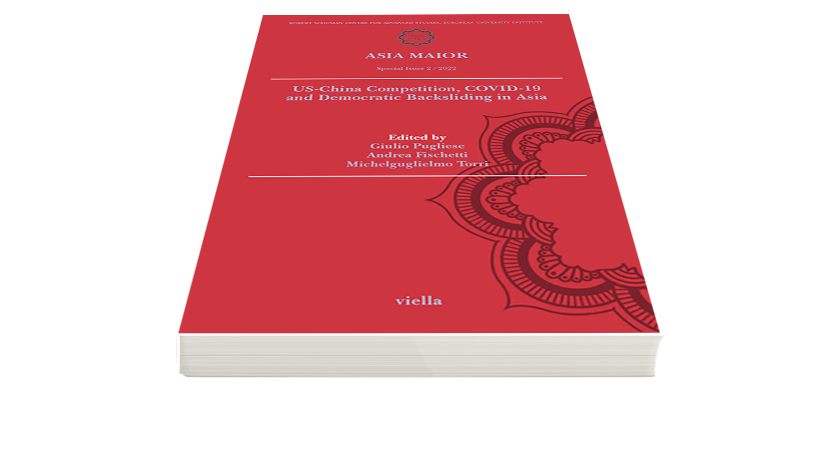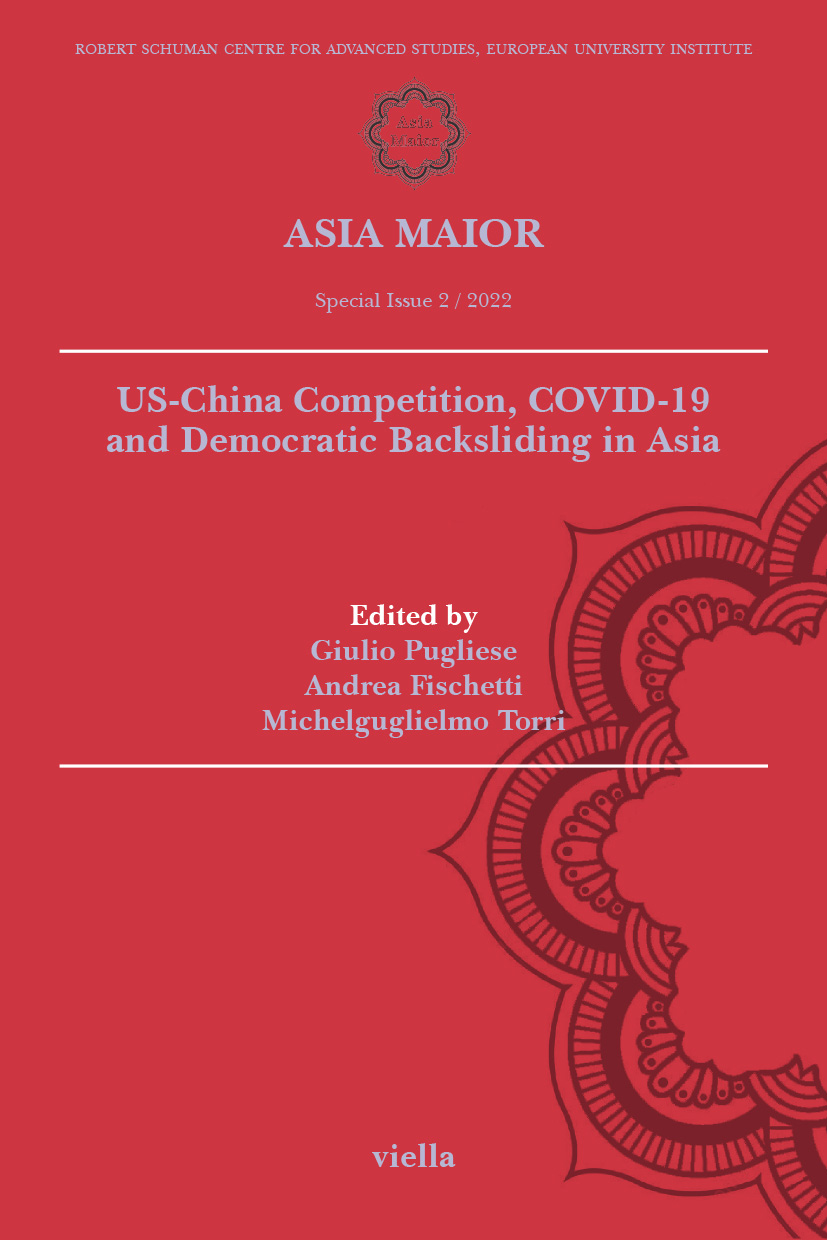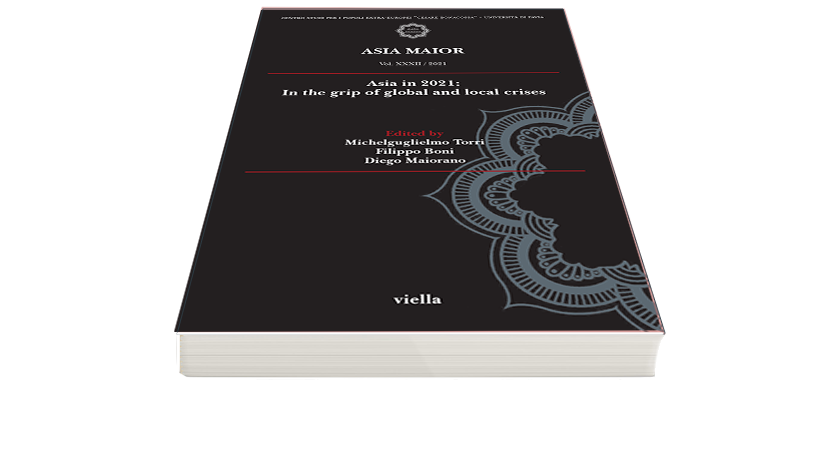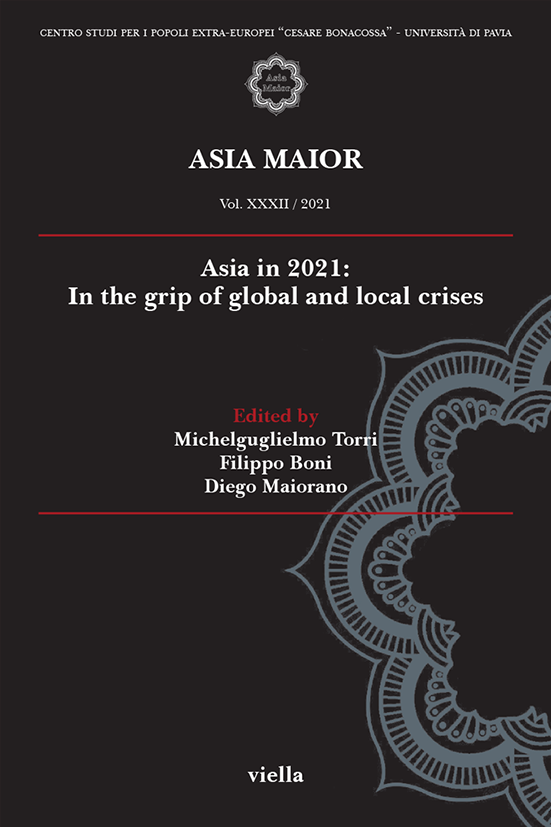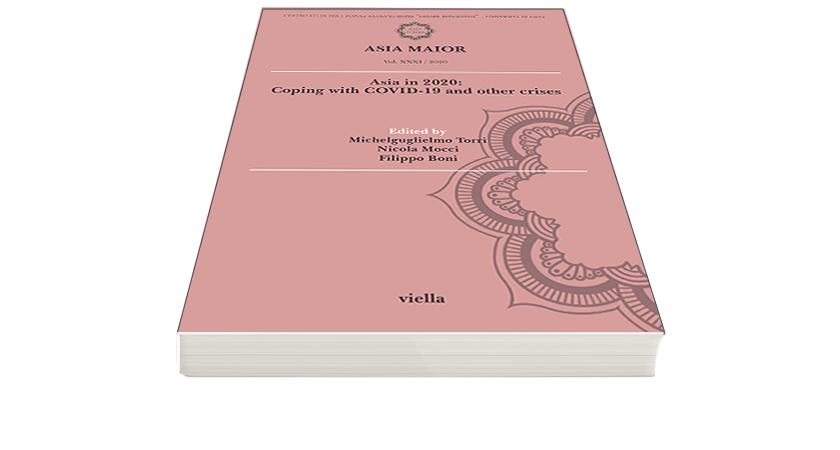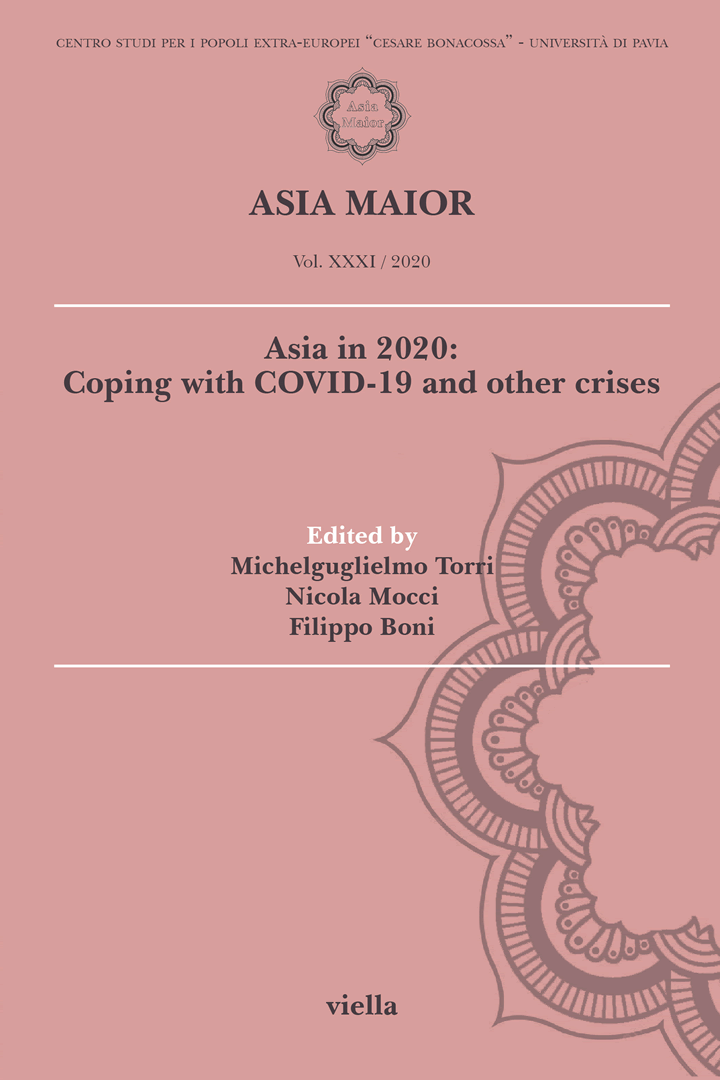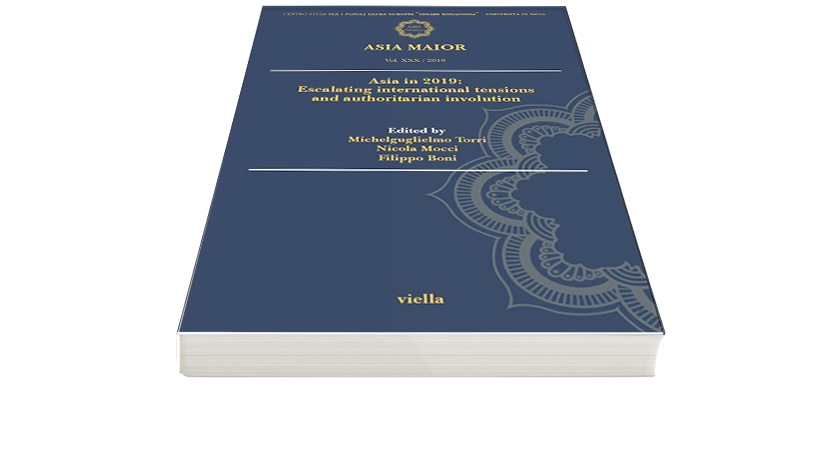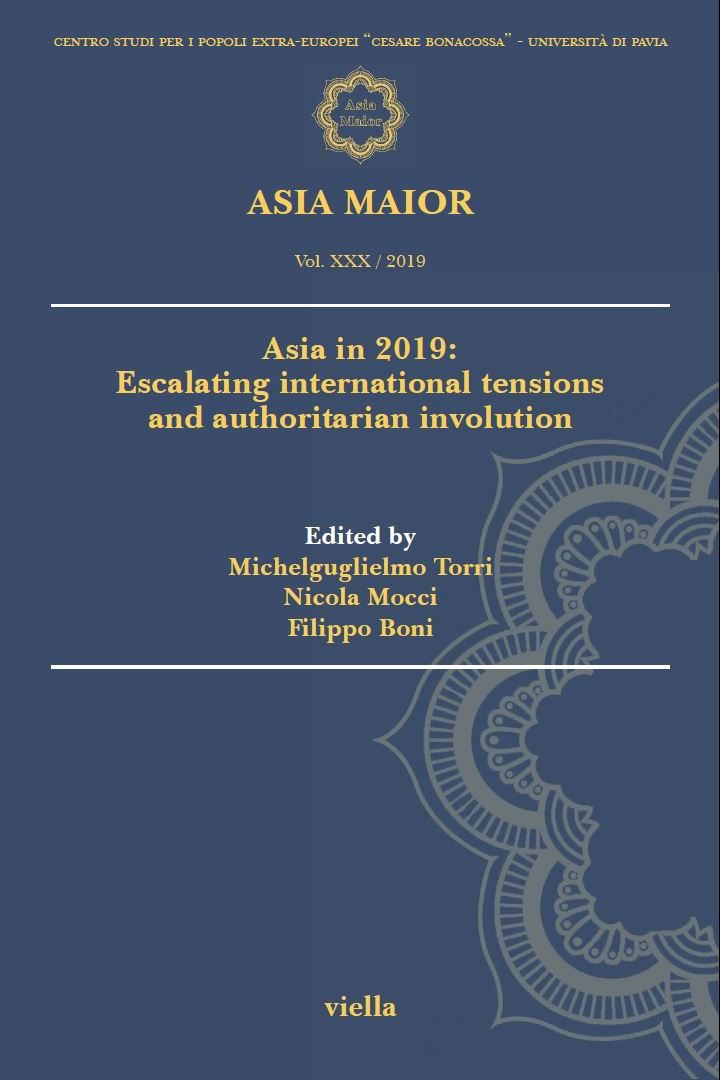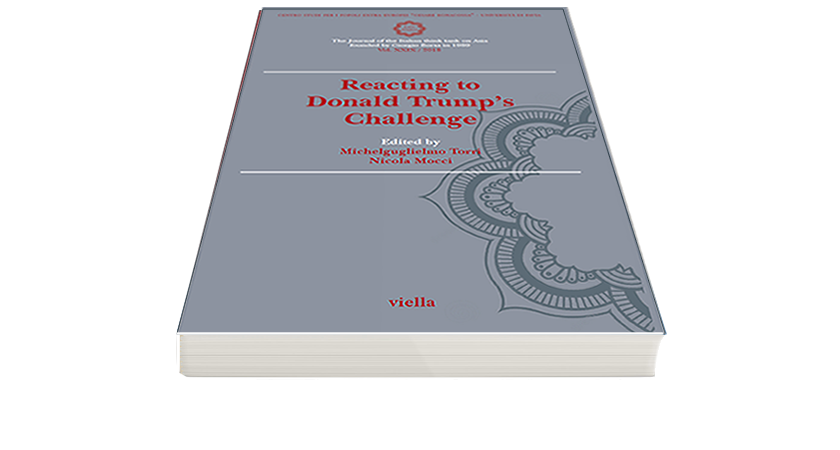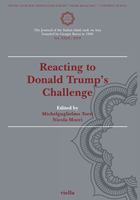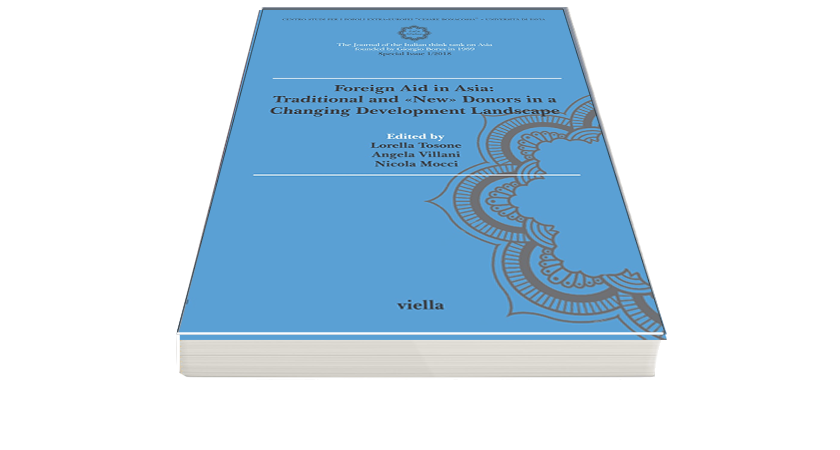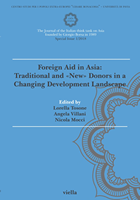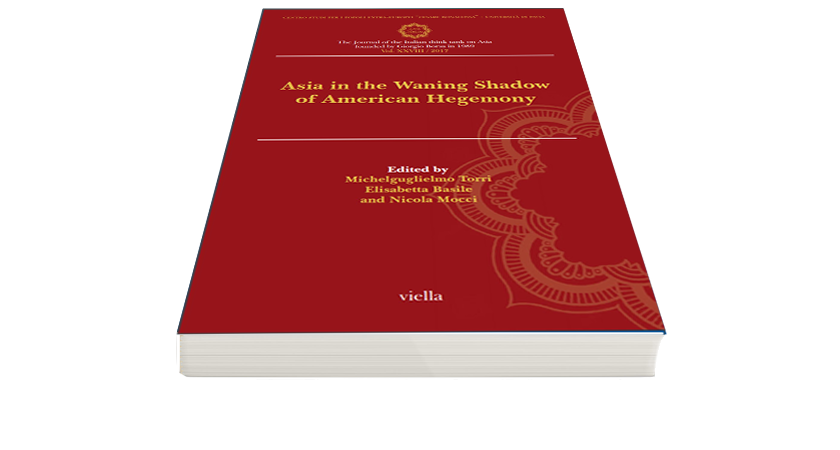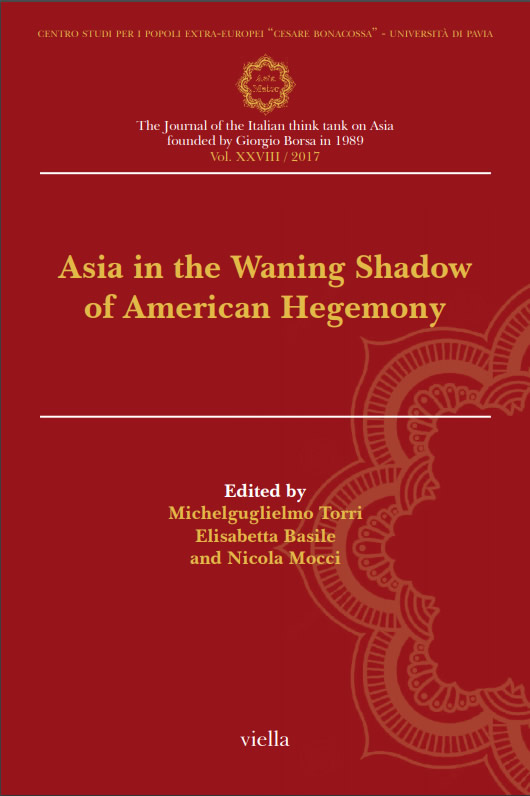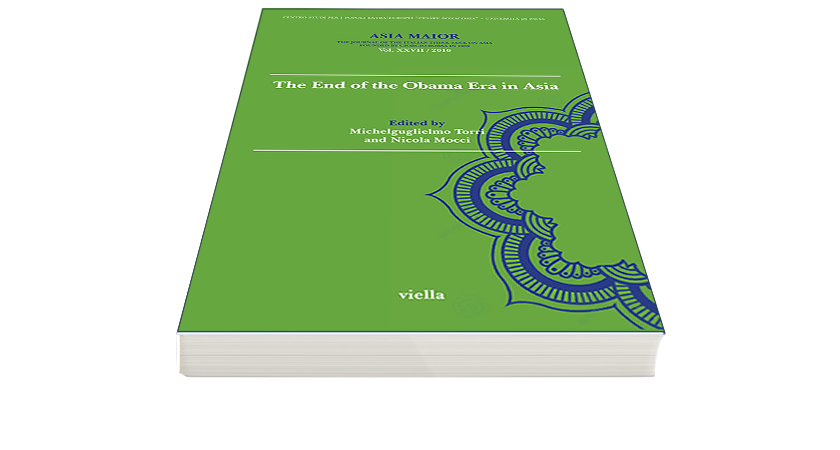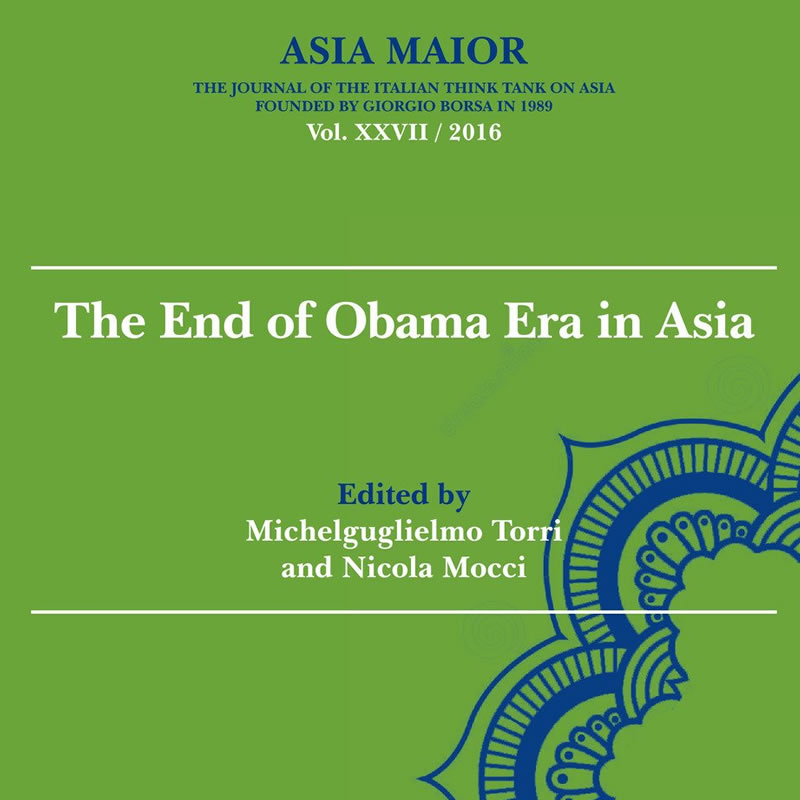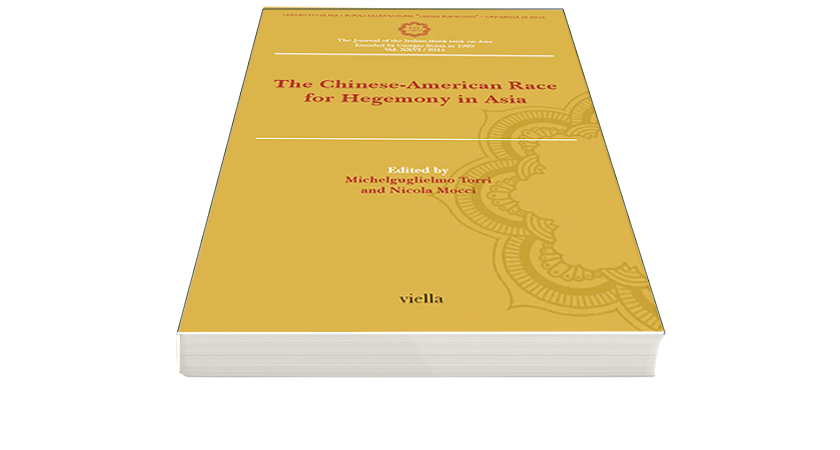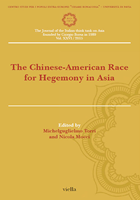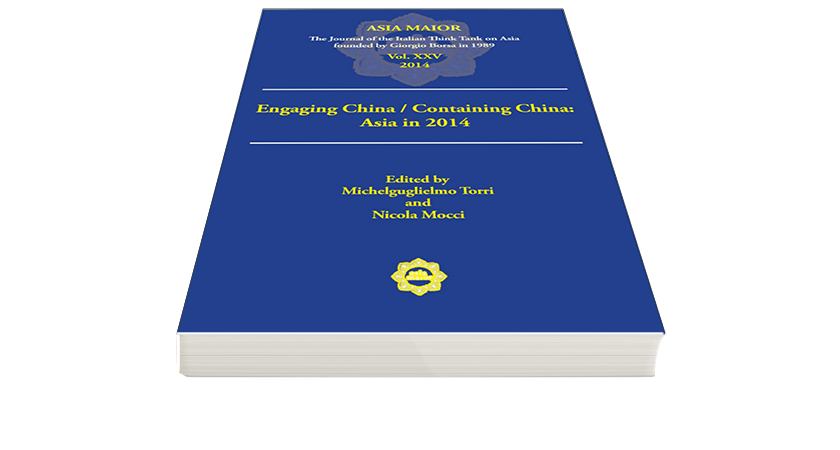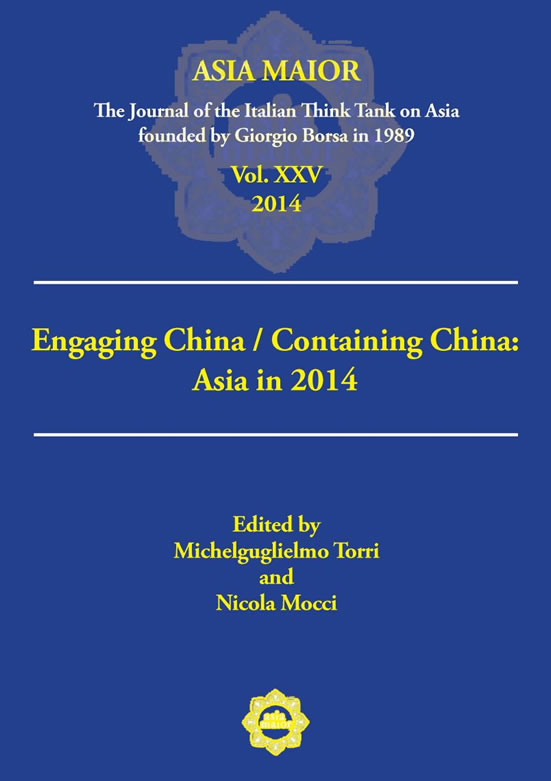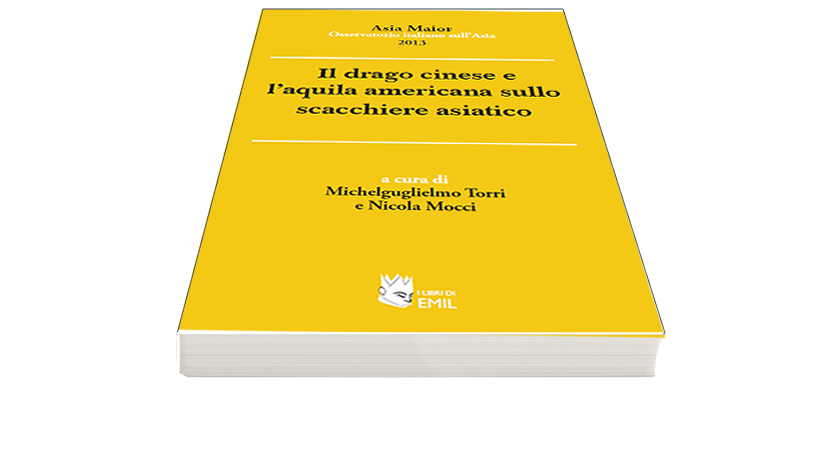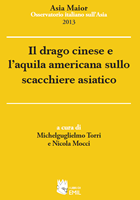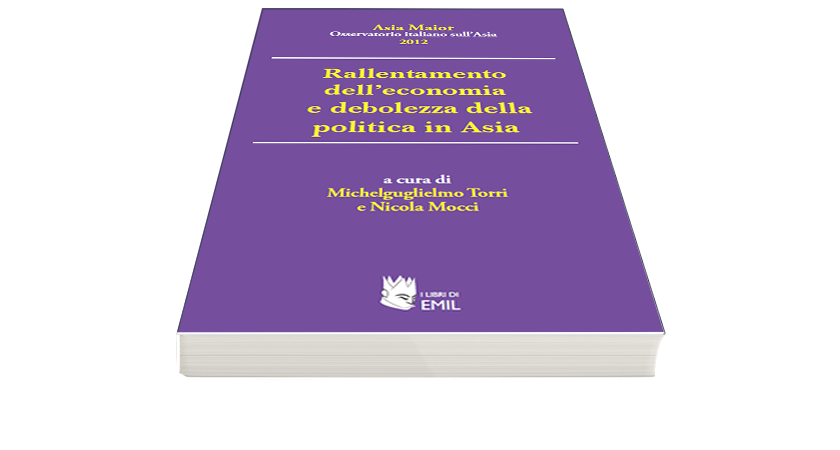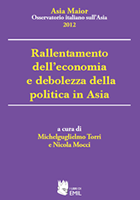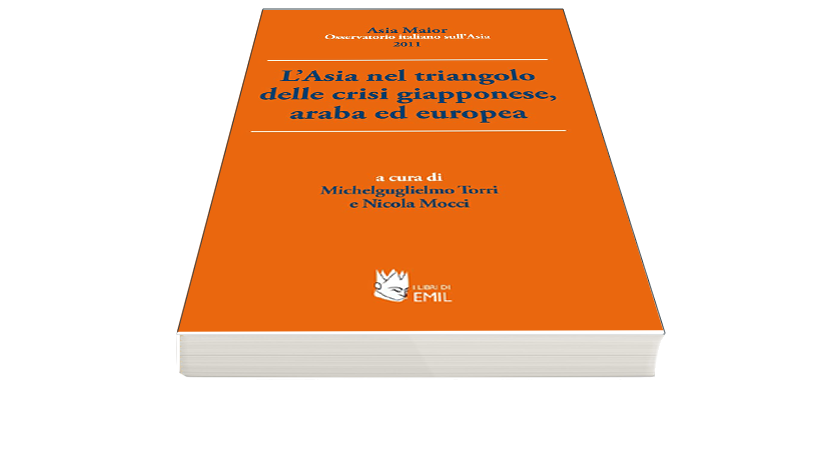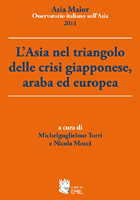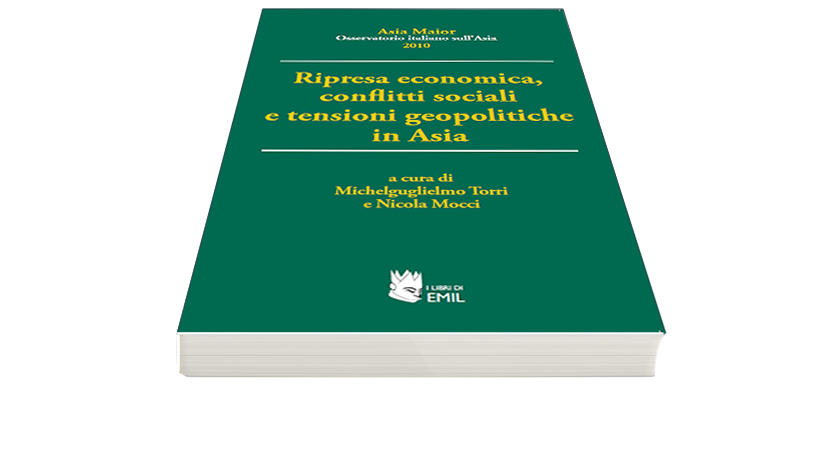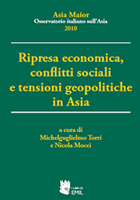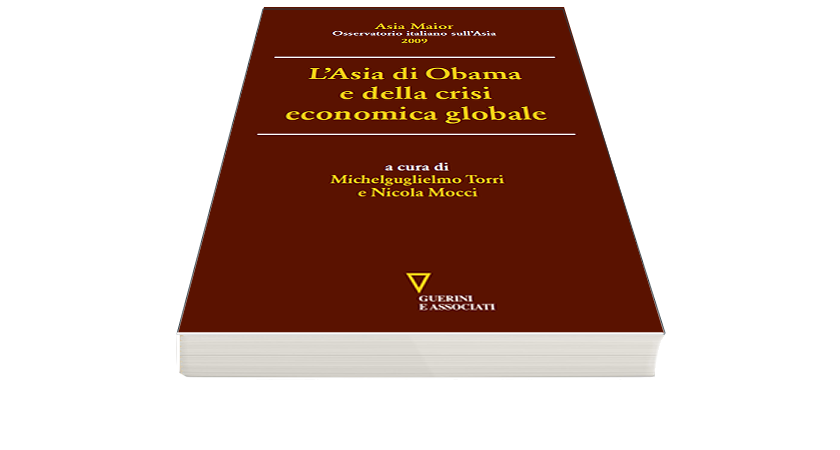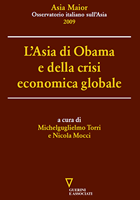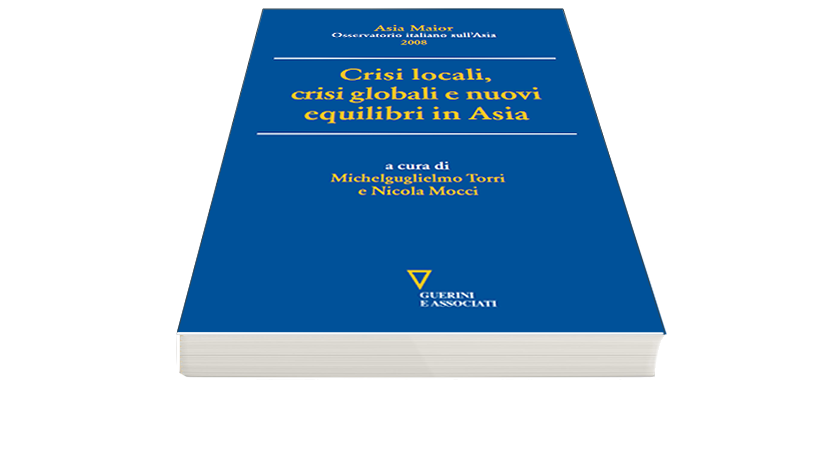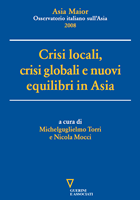While drastic changes have occurred in Japan’s domestic politics, its foreign policy has been characterised by continuity. In a year defined by domestic political turmoil, financial volatility and environmental catastrophes, the ever dominant Liberal Democratic Party (LDP) witnessed a dramatic leadership change and lost the absolute majority in a snap election while indirectly maintaining political control over Tokyo. Nonetheless, with the return of Donald J. Trump looming on the horizon of Japan’s foreign policy and security, the two administrations of Prime Ministers Kishida Fumio and Ishiba Shigeru in effect persistently followed Abe’s goal of strengthening the country’s economic security and defence posture. Japan’s defence autonomy has been increased by engaging the United States in the region, deepening security partnerships, and improving relations with China. However, questions have recently emerged regarding the future of the foreign policy direction established by Abe, as the LDP, led by Ishiba, has been compelled to make numerous concessions to opposition parties due to its minority status.
Keywords – Constitutional Democratic Party; Democratic Party for the People; Ishiba Shigeru; Kishida Fumio; Japan 2024 general election; Japan-NATO relations; Japan-US relations; Japan-China relations; Liberal Democratic Party; Official Security Assistance; social media populism; 2024 Tokyo gubernatorial election.
1. Introduction
Japan’s year in review was characterised by internal political strife and turmoil, producing leadership changes in several major parties and resulting in a significant paradigm shift at the policymaking level due to the LDP’s loss of the absolute majority in the Lower House of Japan’s National Diet. The scandal-ridden LDP underwent several transformations in the year in review, though it remains to be seen how effective these would be in the mid- and long term. Certainly, the emergence of a figure such as Ishiba Shigeru as leader of the party of relative majority and prime minister, starkly contrasted with both the ruling style of his predecessor Kishida Fumio and the legacy of Abe Shinzō. Described as an «idealist» and a conservative democrat, Ishiba has in fact been a political outsider for years in the Abe-dominated LDP and rose only recently in 2024 as the man who could reform his party’s image and rebuild the Japanese public’s trust in political processes. Despite his efforts, disillusionment and political disaffection were once again major factors in the 2024 general election, which saw the third-lowest voter turnout since 1946.
Ahead of the general election in October, the Tokyo gubernatorial elections took place, confirming incumbent governor Koike Yuriko for a third term at the helm of a global city of 14 million people contributing to a fifth of Japan’s total GDP. At the same time, the vote in Tokyo demonstrated how the political landscape was changing in favour of those politicians, even social media populists such as Ishimaru Shinji, seeking to capitalise on popular disaffection with mainstream politics, without, however, offering alternatives based on specific programmes.
As far as the economy is concerned, Japan recorded moderate growth rates amidst preoccupations with a burgeoning public debt, which was predicted to continue expanding due to a rapidly ageing population, and the government’s intention to increase its defence spending. In addition, the economic costs of Japan’s structural vulnerabilities to large-scale seismic events and climate change and the limitations of government action in this area were clearly apparent, with the Japanese government struggling to accelerate the reconstruction of quake and flood-hit Ishikawa Prefecture throughout the year in review.
In contrast, Japan’s foreign policy was characterised by continuity. China has dominated threat perception. Kishida continuously invested great effort in strengthening national security, as announced in 2022 in the National Security Strategy (NSS), the National Defense Strategy (NDS), and the Defense Buildup Program. These security documents enable Japan to be autonomous and proactive in security matters – a clear continuation of a trajectory that was set by Abe.
The Kishida and Ishiba administrations have also aimed to enhance Japan’s defence autonomy, engage the United States in the region, and strengthen security partnerships. At the same time, the prospect of Donald J. Trump returning to office has prompted initiatives to improve relations with China and reduce the tense geopolitical situation.
2. Domestic affairs
2.1. Factional turmoil and political reform: the LDP’s struggle for public trust under Kishida
Amidst crucial elections being held in several large democracies around the globe, Japan was supposed to be an exception, with no major vote foreseen in 2024. However, this forecast proved incorrect against the backdrop of changes in the domestic political landscape following Prime Minister Fumio Kishida’s announcement in mid-August that he would not run for a second term as president of the Liberal Democratic Party of Japan (LDP, hereafter).
As recounted in detail by Pugliese and Zappa [2024], since late 2023, the administration led by the former Foreign Minister had been severely embattled due to scandals involving the PM’s own staff and close aides, as well as dozens of LDP politicians embroiled in a slush fund scandal. By July 2024, Kishida’s popularity had fallen below 30%, with some surveys indicating a meagre 15.5% approval rate [Kushida 2024, 22 August; Jiji Press 2024, 11 July ]. Two major factors contributed to this downward trend. First, the perceived inability of his administration to decisively and structurally tackle problems affecting the Japanese economy, such as rising inflation and stagnating wages, largely overshadowed the administration’s achievements, including the possible long-term effects of reviving the national semiconductor industry and enhancing the country’s energy security [Takenaka 2024c]. Second, the wave of public discontent towards the LDP after the kickback scandal of late 2023 and Kishida’s inability to take serious steps toward a thorough reform of the LDP structure led him to avoid seeking reelection, as was widely predicted [Pugliese and Zappa 2024]. Hence, Kishida’s resolve to make way for a new leader who could «firmly present a newly born LDP to the people» [Sasagawa 2024, 14 August] was made public during a pause in the PM’s diplomatic agenda in mid-August.
Apart from Japan’s overall economic situation, which will be discussed in detail later, responding to the Japanese public’s dissatisfaction with how the kickback scandal had been handled became a top priority for the incumbent PM and LDP President. Faced with the indictment of three party factions (including his own) whose accounting chiefs failed to report income and expenses amounting to around ¥1.7 billion (€10.3 million) over five years through 2022 [Takenaka 2024b; Tomisaki 2024], Kishida resorted to the strategy of «faction dissolution» (habatsu kaishō). The decision to dissolve the party factions, beginning with his own dovish Kōchikai in mid-January, became the cornerstone of Kishida’s strategy to restore public trust in the LDP (kokumin no shinrai o kaifukusuru). However, it failed to halt the cabinet’s plummeting popularity. Such a measure had been proposed by LDP leaders on several occasions since 1963. Still, it was only temporarily implemented in the aftermath of the asset-price bubble in the mid-to-late 1990s, when the LDP had to share power with its long-time opponent, the Japan Socialist Party (JSP), in subsequent non-LDP-led coalition and, later, minority governments [Shiota 2024, 10 February].
The effects of Kishida’s announcement were immediately visible. Other embattled faction leaders, such as Nikai Toshihiro, an 85-year-old party veteran and leader of the fifth-largest faction in the party, followed Kishida by announcing the end of his group as a prelude to his political retirement in March [The Asahi Shimbun 2024, 25 March]. Later in January, the Abe faction – the group at the center of the kickback scandal of late 2023 – was also disbanded as its leaders, including the chair of the executive board Shionoya Ryū, former ministers Hagiuda Kōichi, Takagi Tsuyoshi, Sekō Hiroshige, and Nishimura Yasutoshi faced increasing pressure over their alleged accounting irregularities and unreported donations and were urged to testify before the Diet’s Deliberative Council on Political Ethics [The Asahi Shimbun 2024, 21 February].
Meanwhile, the LDP Ethics Committee announced disciplinary measures for 39 lawmakers who were found guilty of misappropriating and misreporting donations. As a result of the party’s internal investigations and deliberations, former members and leaders of the Abe faction were either suspended (Nishimura), temporarily barred from public office (Hagiuda), or, in the most extreme case, expelled from the party (Shionoya and Sekō) [Konno 2024, 4 April].
Following these developments, in mid-April, after months of hesitation, LDP Secretary-General Motegi Toshimitsu finally declared that he would disband his faction [Takenaka 2024b].
Upon disbanding the Kōchikai, Kishida also announced the creation of a «task force» aimed at reviewing funding procedures and promoting internal party reform. The PM entrusted the group, known as «The Headquarters for Political Renovation» (Seiji sasshin honbu), with drafting a series of recommendations by the end of January 2024, appointing former PMs and party heavyweights Asō Tarō and Suga Yoshihide as chief advisors.
The group’s final report once again called for the dissolution of all factions and a ban on autonomous fundraising events while backing stricter sanctions against LDP members and administrators accused of political corruption, introducing the «guilt by association» principle. According to the document, LDP members should transfer the sums collected through fundraisers to the party’s bank account and fill in online income and expenditure reports to increase transparency. The new Party Discipline Code was approved in early March [The Asahi Shimbun 2024, 8 March]. Nonetheless, the LDP task force acknowledged the possibility of replacing factions with «policy groups» (seisaku shūdan), which appeared to be a compromise between Asō, a staunch supporter of factions, and Suga, who had been critical of the faction system since his term as PM in 2020 [Nakada 2024, 22 January; Nihon Keizai Shinbun 2024, 11 January].
Interestingly, Asō, who served as LDP vice-president during Kishida’s term and presided over the party’s second-largest faction at the time, expressed reluctance to disband it. He quickly announced the continuation of his group, the Shikōkai, as a policy group [Yomiuri Shinbun 2024, 6 January; Kyodo News 2024, 27 January]. Critics of this move argued that the reform of the faction system was nothing more than a smokescreen, diverting public attention from the party’s inability to address concerns over political funding transparency [Morimoto and Andō 2024, 25 January]. Other observers, however, noted that by mid-May 2024, despite being unpopular among voters, Kishida was more empowered than ever since his ascent to the PM’s office in 2021 [Takenaka 2024b].
This position of relative power enabled Kishida to push a series of amendments to the political funds control law through the Diet in June. The amendments established harsher penalties for violators while reducing opportunities for lawmakers to collect anonymous donations and setting stricter limits on their annual political expenditures [French 2024, 19 June]. The amended law was a notable result of Kishida’s willingness to engage in multiple rounds of negotiations with the opposition and reach a consensus-based proposal [Harris 2024a].
In effect, however, the new rules may have shifted the balance of power within the LDP in favour of unaffiliated party members [Johnston 2024, 16 August] and strengthened not only Kishida but also prospective party leaders and PMs, while weakening faction leaders. It is evident, though, that in his attempt to rebuild the LDP’s public image, Kishida had alienated some of his former backers among senior LDP figures, particularly vice-president Asō [French 2024, 19 June; Harris 2024a].
2.2. From «underdog» to leader: Ishiba’s propitious moment
Against this backdrop, nearly a month ahead of the decisive LDP Presidential elections, Kishida declared that he would not seek reelection, thus opening a race for the nomination of his successor as LDP President and PM [Sasagawa 2024, 14 August]. Speculations mounted that Kishida worried about not being able to win a general election and sensed a lack of support from senior party leaders [Harris 2024c]. This notwithstanding, it might be worth stressing that Kishida’s post became even more unstable after the April 2024 by-elections concluded with an all-out win by the opposition Constitutional Democratic Party (CDP) in the three single-member districts of Shimane, Nagasaki and Tokyo N. 15 (Kōtō District) that were scheduled to elect their representatives to the Lower House of the Diet [Asahi Shinbun 2024, 28 April]. Though the relationship between the slush-fund scandal and the LDP’s demise at the by-elections in April is undeniable, Kishida’s shortcomings contributed to the negative performance. Particularly, one might highlight the PM’s inability to pursue a convincing public communication strategy that could clearly illustrate to the public his administration’s policy achievements [Takenaka 2024c]. The aforementioned developments provided the backdrop for Ishiba Shigeru’s rise to the LDP presidency in September and for the general elections later in October.
Often described by the media as a «railway otaku» and a «security policy wonk» [Nakajima 2024, 21 October; McCurry 2024, 17 September], the 67-year-old Ishiba had already run for the LDP top post four times, in 2008, 2012, 2018 and 2020. He is often characterised as an antithetical figure to the late PM Abe Shinzō, assassinated in July 2022, and as an «underdog» within the LDP. In 2008, he ran against Asō, was defeated, and subsequently aligned with Asō’s successor as LDP President and opposition leader during the DPJ rule between 2009 and 2012, Tanigaki Sadakazu [Ishiba 2022]. In 2012 and 2018, he ran against Abe, being defeated twice. Particularly, Ishiba’s second attempt in 2018 annoyed Abe. In his posthumous memoir, Abe described Ishiba’s decision as opportunistic – Ishiba had been appointed LDP Secretary-General in 2012 and minister in Abe’s reshuffled cabinet in 2014 – and a «repudiation of the Abe cabinet». In fact, Ishiba’s decision had been taken in a moment of political «weakness», due to a double scandal, caused by the sale of lots of formerly state-owned land to private educational companies with ties with Abe and his family, the so-called «Mori-Kake affair» (Morikake mondai) [Abe et al. 2023, 306-307]. Frictions between the two remained high afterwards.
After Abe decided to step down as PM and LDP President in 2020, Ishiba competed again but was defeated by Abe’s longtime supporter and former Chief Cabinet Secretary Suga Yoshihide. The following year, Ishiba decided to take a step back and not run against his predecessor, Kishida Fumio. Instead, as he admits in one of his recent books, he chose to study and wait until his chance would finally come. He goes on to equate himself to Ōishi Kuranosuke, a popular figure in Japanese folklore known for being the leader of the Forty-seven rōnin [Ishiba 2022, 77-78]. As Ōishi, Ishiba waited for the propitious moment to attack and engage in his «final battle» [Harris 2024b].
The son of a former Tottori prefectural governor who also had a brief stint as minister of Home Affairs and president of the National Public Security Commission in the early 1980s, just prior to his passing, Ishiba is a second-generation hereditary politician like several of his predecessors. He has continuously been a member of the House of Representatives (the Japanese Diet’s Lower House) for 12 terms since 1986. Ishiba’s political career is bound to one of Japan’s postwar most popular and revered figures, Tanaka Kakuei, PM between 1972 and 1974 and a friend to Ishiba’s father, Jirō. After Ishiba senior’s demise, Tanaka reportedly encouraged the young Shigeru to run for a seat in the National Diet for his constituency in Tottori.
Tottori, on the Sea of Japan coast of Honshū, is the least populated Prefecture in Japan, with just under 530,000 residents as of January 2025. The prefecture is largely rural, with more than half of its population concentrated in the two larger cities of Tottori, the prefectural capital (nearly 182,000 residents), and Yonago (143,000).
From a Tokyo-centric point of view, the Prefecture appears backwards, remote, a drowsy buen retiro for the holidays of urbanites. Tottori has, in fact, one of Japan’s lowest population density rates, and, like most other rural prefectures in the archipelago, struggles with a rapidly ageing population and low fertility rate. And yet, after the end of the COVID-19 pandemic, this area has registered more annual births, albeit below the substitution rate, than other regions in Japan. Affordable daycare and healthcare services have been cited as factors making life easier for families with children in Tottori [Yoshida 2023, 14 October]. Since 2014, facilitated by the relatively small scale of the Prefecture, the local government, led by Hirai Shinji during the last two decades, has been waiving daycare fees for children living in communities in the low uplands and for families with more than two children in urban areas. Also, the local government has made healthcare free of charge for the youth until high school age, regardless of their family’s annual income. More recently, the prefectural government has started offering subsidies and support for infertility treatment and preliminary medical examinations for embryo implantation, which are currently excluded from the national insurance system [Care News 2024, 15 November].
These services, combined with other government subsidies aimed at attracting the so-called «I-turners» (people who decide to relocate their residence or business from cities to rural areas), have certainly enhanced Tottori’s attractiveness. Concomitantly, they have turned this small prefecture into a policy laboratory for several of Japan’s current challenges, starting from rural revitalization. This is hardly coincidental; rather, it is the fruit of Ishiba’s continuous support and patronage.
In nearly forty years of political activity, he has served in various ministerial posts (director general of the Defense Agency, minister of Defense, minister of Agriculture, Forestry and Fisheries, minister for Rural Revitalization) and high-ranking party positions (LDP secretary-general). Particularly since the early 2010s, by leveraging his political influence, Ishiba has served as a transmission chain between Tokyo and his constituency. His efforts have guaranteed an inflow of public money even to remote areas in his electoral district in Tottori for public works such as the renovation of schools and public libraries, thus buttressing the relationship with his own voters [Rich et al. 2021, 28 October].
Against this backdrop, Kishida’s surprise decision to step down provided the opportunity that Ishiba had sought since 2008.
2.3. Ishiba’s «five protects» and the «security-oriented» cabinet
The dissolution of party factions, combined with the new party regulations, reduced the capacities of faction leaders to streamline support toward specific candidates. This factor led to a record number of candidates, nine, that had obtained the necessary twenty endorsements from fellow lawmakers [Maslow 2024, 27 September]. These included party veterans, such as foreign minister Kamikawa Yoko, former Chief Cabinet Secretary (CCS) Katō Katsunobu, then LDP Secretary-General Motegi Toshimitsu and Ishiba himself; emerging leaders such as Minister of Economic Security Takaichi Sanae, Minister for Digital Transformation Kōno Tarō, and CCS Hayashi Yoshimasa; and rising stars in their 40s, such as Takaichi’s predecessor Kobayashi Takayuki and former Minister of the Environment Koizumi Shinjirō [Kyodo News 2024, 26 August]. Against this backdrop, Ishiba moved to officially announce his candidacy as LDP president and PM in late August, a few days after Kobayashi. As per LDP regulations, the successful candidate must obtain 51% of 734 votes (367 as the number of LDP Diet members at the time of the vote and 367 more representing the total of 1.1 million party members across the country). In the absence of a clear majority, a runoff vote (367 Diet members’ votes plus 47 as the number of Japan’s Prefectures representing LDP local branches) is held between the two most voted candidates [NHK News Web 2024, 12 September].
The keyword for Ishiba’s campaign was mamoru («to defend/protect/keep»). Specifically, Ishiba’s campaign headquarters devised «five protects» (itsutsu no mamoru): rules and regulations (rūru o mamoru), the country (Nippon o mamoru), the Japanese people (kokumin o mamoru), the rural areas (chihō o mamoru), and opportunities for women and the youth (wakamono-josei no kikai o mamoru). By contrast, Takaichi insisted on making Japan «stronger and richer», echoing her mentor Abe’s intent to turn Japan into a world power. After the first round, Ishiba came in second after Takaichi with 154 votes against 181. Takaichi could count on the support of the party’s right wing, including LDP Vice-President Asō Tarō and former Abe faction members; meanwhile, moderate reformists converged on Ishiba. In the second decisive round, the situation was reversed in favour of Ishiba, who secured 215 votes, against 194 for Takaichi, thus being elected LDP president. According to insiders, Koizumi, who ranked third in the first round, along with Hayashi and Kamikawa, both of whom belonged to the now dissolved Kishida faction, are likely to have coalesced their respective support bases behind the former LDP secretary-general [ANN News 2024]. Ishiba may as well have received the support of the 79-year-old Moriyama Hiroshi, a long-time LDP official, described as a self-made politician and skilful negotiator, who had been the leader of a faction dissolved early in January 2024 [Kyodo News 2024, 30 September; Jiji Press 2025, 19 January].
Soon after taking charge, Ishiba appointed the new party leadership. Moriyama was awarded the party’s second-in-command in his appointment as secretary-general, while Kishida’s Minister of Finance Suzuki Shunichi was appointed chair of the General Council, the party’s organ in charge of personnel affairs and drafting of legislation; on his part, former Minister of Defense Onodera Itsunori took over as chair of the Policy Research Council. Koizumi Shinjirō, son of former PM Jun’ichirō and popular figure among younger LDP supporters and MPs, was appointed chief of the election strategy in an attempt to reverse the course of the LDP’s fading popularity caused by the slush-fund scandal [Fujiwara 2024, 29 September]. Former PM Suga, one of the kingmakers of the 2024 LDP Presidential elections, was appointed vice-president, succeeding the 84-year-old Asō, who was nominated senior advisor (saikō komon). This position was revamped after thirty years in an attempt to appease the influential former PM and FM [Nihon Keizai Shinbun 2024, 10 October]. In fact, in the runoff vote between Ishiba and Takaichi, Asō had supported the latter, mobilising the more conservative fringes of the LDP behind the then Economic Security Minister of the Kishida cabinet. Furthermore, despite Ishiba’s historic rivalry with Abe, the new LDP President appointed Fukuda Tatsuo, a former member of the Abe faction and third generation hereditary politician, to executive acting secretary-general and reportedly offered the position of General Council chairperson to his rival in the LDP presidential election Takaichi Sanae, who in turn rejected the offer. In light of these facts, when it comes to party appointments, it is possible to agree that Ishiba showed a pragmatic approach for the sake of party unity [Kim 2025].
However, as far as cabinet appointments are concerned, Ishiba adopted a more nuanced approach reflecting his major policy foci, namely defence and regional revitalization. In fact, with four figures – Hayashi Yoshimasa, Iwaya Takeshi, Nakatani Gen, and Ishiba himself – with a Defense Ministry background in key posts – chief cabinet secretary, foreign minister, defense minister and prime minister, respectively – the current administration seemed to be oriented toward prioritising national security. In this regard, in his first policy speech on 4 October, Ishiba pledged to work for everyone’s serenity (anshin) and security (anzen), by, among other things, «drastically strengthening» the country’s defence capabilities in the face of the «most serious security environment» since the end of World War 2 [Tōkyō Shinbun 2024, 4 October]. As illustrated in more detail below, this posture is largely consistent with that of the Kishida administration [see Wallace and Pugliese 2023; Pugliese and Zappa 2024].
Also, Ishiba appointed several of his supporters and proteges to key cabinet positions concerned with regional revitalization, a longtime policy priority for Ishiba. For instance, he appointed a fellow MP from Tottori, Akazawa Ryōsei, as Minister for Economic Revitalization. The new Minister of Internal Affairs and Communications Murakami Seiichirō, a loyal Ishiba ally since his third presidential bid in 2018, also pledged to make special efforts in this area [Jiji Press 2024, 7 October; PMO 2024]. This latter appointment in particular hit the headlines and signalled Ishiba’s intent to distance himself from Abe Shinzō’s legacy. An outspoken critic of Abe and his policies, Murakami had gone as far as to define the former PM a «traitor» (kokuzoku), thus receiving a yearlong suspension from any official appointments in the LDP organs in 2022 [Tōkyō Shinbun 2024, 1 October].
Reinforcing the impression of an anti-Abe connotation of Ishiba’s cabinet appointments, Takaichi was excluded from any post. On top of the above-mentioned frictions over party posts, it had emerged ahead of the general election that Takaichi, in her LDP presidential bid, had reportedly been endorsed by six LDP figures involved in the slush-money scandal [Asahi Shinbun 2024, 18 September; Yawata 2024, 25 November].
In light of the above, Ishiba’s aspiration to restore public confidence in the political process inevitably conflated with the strategy, already initiated under Kishida, to abandon Abe’s political course by excluding Abe’s acolytes from influential posts in the government and the LDP [Pugliese and Zappa 2024; Takenaka 2024a].
2.4. Leadership transitions in the opposition camp: the «Tokyo effect»
Meanwhile, the Constitutional Democratic Party (CDP), the main opposition party, changed its leadership three years after the election of its president, Izumi Kenta. After a tight race between four candidates, former Democratic Party of Japan (DPJ) PM (2011-2012) Noda Yoshihiko won the nomination. Similarly to Ishiba, since even before the revelations on the slush-fund scandal, Noda had established a media presence criticising the LDP’s money politics and stressing his own political integrity [e.g. Abema News 2023, 1 February]. In September, he campaigned on a political platform focused on the provision of «basic services» through fresh government spending in healthcare and children’s daycare, and in support of the country’s impoverished middle class. Edano Yukio, a former minister of the Economy, Trade and Industry in the DPJ administration and leader of the CDP between 2017 and 2021, also ran on a similar platform centred on the concept of «human economics» (that is, more investment and government spending in welfare and education, to reduce the financial burden on consumers). Nonetheless, Noda could count on the backing of Ozawa Ichirō, a former LDP secretary-general who has been a back-door influencer in the opposition camp since he left the LDP in 1993. Against this backdrop, the former DPJ PM (2011-2012) was reportedly better positioned than his contenders in the leadership race due to his perceived political proximity to centre-right opposition parties and the LDP [Marcantuoni 2024].
Noda’s surprise comeback needs to be viewed in the context of the CDP’s crushing defeat at the Tokyo gubernatorial elections earlier in July.
With a population of nearly 14.2 million people, Tokyo is Japan’s political and economic centre. The city’s aggregate domestic product amounts to around €1 trillion, i.e., one-fifth of Japan’s total GDP [Tokyo Metropolitan Government 2025]. Naturally, given the LDP’s debacle at the April by-elections, the Tokyo gubernatorial election was predicted to be a close race between the LDP-backed incumbent governor, Yuriko Koike, seeking re-election for the third time, and Renhō, an independent candidate and former minister in the DPJ administrations, supported by the CDP and the Japan Communist Party (JCP).
Fearing a dramatic setback amidst an electoral chaos, with 56 candidates running for the post or just for personal publicity [Hall 2025, 30 January], the LDP decided to rally behind Koike [The Asahi Shimbun 2024, 13 June]. This strategy eventually paid off as Koike secured the reelection with 2.9 million votes, particularly from LDP supporters and voters with no specific party preference [Matsumoto 2024, 8 July]. Surprisingly, the CDP-backed candidate fared very poorly. Renhō was surpassed by an outsider candidate, Ishimaru Shinji, the 42-year-old mayor of a small town in Hiroshima Prefecture, Akitakata. A former Mitsubishi UFJ Financial Group (MUFG) employee and social media personality famous for his criticism of old habits in local politics (vote-buying, use of obscure language, laziness), Ishimaru emerged as an anti-establishment independent candidate who was able to translate part of his millions of viewers and followers into an actual support base.
Eventually, Ishimaru was able to surpass Renhō by nearly 400,000 votes, securing a 24.3% share of votes, against the CDP-backed candidate’s 18.5%. In particular, the social media personality turned politician was able to mobilise young and unaffiliated voters [Matsumoto 2024, 8 July]. As illustrated by his election strategist, the so-called «elections god» (senkyo no kamisama), Fujiwara Shinnosuke, a former aide to Ozawa and LDP PM Fukuda Yasuo, and, more recently, advisor to LDP’s Takaichi, Ishimaru’s major strength was, in fact, his programme’s lack of focus on actual policies. In his rallies, he instead opted for a communication strategy centred on himself and his personal story, hence avoiding the risk of being perceived by the public as the «same old liar politician» [The Asahi Shimbun 2024, 17 July]. His strategy to appeal to disillusioned and distrusting voters won him a conspicuous following and renown as a social media populist [Hall 2025, 28 January; The Economist 2024, 11 July], putting him in the condition to launch his own party, the Path to Rebirth (Saisei no michi) whose mission was fostering regional revitalisation [Ninivaggi 2025, 15 January].
The CDP’s failure to advance in Tokyo jeopardised incumbent CDP President Izumi Kenta and sent a warning message to prospective leader Noda, who had supported Renhō in her gubernatorial campaign.
2.5. Japan’s 2024 general election: back to a 1993 scenario?
On October 9th, Ishiba followed up on his intention to dissolve the Lower House and call a snap election, officially announcing that it would be held on October 27th, just 26 days after taking office. Ishiba’s ideas had already become clear on September 30th, one day before being confirmed PM by the Diet. The move was considered «anomalous» by the opposition, which blocked the beginning of the joint Diet session scheduled on that day to confirm the PM’s appointment. The official justification for Ishiba’s decision was that his selection had resulted from perceivably obscure party processes and a Diet vote, and that he wanted to face «the voter’s judgement as soon as possible» to rebuild public confidence in the LDP [The Asahi Shimbun 2024, 2 October]. Thus, by announcing the dissolution of the Lower House of the Diet, Ishiba placed a bet on his credibility as a political underdog and «unsullied» politician presenting himself as a sort of «reanimator» of the scandal-ridden LDP.
Nonetheless, Ishiba’s decision was severely criticised by the opposition parties, which submitted a symbolic no-confidence vote against the PM, accused of prioritising the interest of his party over the country. In fact, the opposition demanded that the new government addressed several urgent issues, including the allocation of emergency funds for the reconstruction of the Noto Peninsula, the hearings of LDP MPs involved in the kickback scandal on the part of Diet committees, and a new investigation into the ties between the LDP and the Unification Church [see Pugliese and Wallace 2023; Nihon Keizai Shinbun 2024, 1 October].
As illustrated above, the two major political parties headed to the polls in October with renewed leadership. In September, LDP’s junior coalition partner Kōmeitō (NKP) also elected a new chief representative after Yamaguchi Natsuo, the party’s longest-serving leader (from 2009 to 2024), announced his resignation. Ishii Keiichi, a former minister of Land, Infrastructure, Transport and Tourism under Abe, took over as leader of the Buddhist movement Sōka Gakkai’s political arm.
Interestingly, Ishii shared a common political experience with both Ishiba and Noda, having been a member of the New Frontier Party (Shinshintō, NFP), a short-lived conservative party born from a split within the LDP orchestrated by Ozawa in the mid-1990s. That political experience followed the LDP’s historic defeat at the 1993 general election. Marred by corruption scandals and internal divisions, the LDP was sent to the Opposition benches for the first time since 1955 paving the way for the formation of two short-lived grand coalition administrations (1993-1994) led first by Hosokawa Morihiro and then, between April and June 1994, by NFP co-founder Hata Tsutomu [Jain 2024, 3 November; Jain 1993].
Despite the new PM’s attempts at restoring the LDP’s public image and the NKP leadership change, uncertainty over the election result loomed. In October, the unlikelihood of an LDP-NKP majority in the Diet became the subject of much press speculation [e.g., Shūkan Bunshun 2024, 18 October; Azumi 2024, 22 October]. Upon the closing of the polls, what was a possibility became reality. The LDP lost the absolute majority in the Lower House for the first time since 2012. While still the largest party nationally, the LDP won «just» 191 seats – 42 short of the absolute majority threshold of 233 out of 465 total seats in the House of Representatives and down 68 seats from the 2021 election. The NKP could only secure 24 seats, insufficient to ensure Ishiba’s reappointment. Conversely, the CDP advanced, winning 148 seats and strengthening its position vis-à-vis the LDP and other opposition forces as Japan’s No. 1 opposition party, becoming the pivot of a possible anti-LDP coalition government [Fahey 2024, 28 October]. Under these circumstances, the PM publicly admitted defeat during a TV interview and added that the election had led to a «very severe state of affairs» for his party and coalition. He acknowledged that voters had not «absolved» the LDP from the slush-fund scandal [Nihon Keizai Shinbun 2024, 27 October].
However, Ishiba’s presiding over a minority government still remains the most likely scenario, thus avoiding the reiteration of the aforementioned «1993 scenario». On November 11th, the Diet finally convened a special session for the PM election. Ishiba was confirmed PM with 221 votes, officially beginning his second term as PM, although this time as the leader of a minority government. Soon after, he reshuffled his cabinet. Most notably, NKP’s Saitō Tetsuo, minister of Land, Infrastructure and Transport in the first Ishiba cabinet, poised to become NKP’s new chief representative, was succeeded by fellow lawmaker Nakano Hiromasa [NHK News Web 2024, 5 November].
On the part of the CDP, the two-week hiatus between the elections and Ishiba’s appointment was a period of intense negotiations with other opposition parties to explore the possibilities of forming an anti-LDP coalition government. However, soon after the polls closed, it emerged clearly that Noda would not gather the necessary support to be elected PM. A key factor barring Noda from becoming the prospective new PM was the resistance from other opposition forces, particularly, the Democratic Party For the People (DPFP), a moderate-conservative formation formed in 2018 after the disbandment of the then Democratic Party (DP, Minshintō, 2016-2018) and its merger with Tokyo Governor Koike’s former national platform, the Kibo no Tō (Party of Hope).
The party quadrupled its seats from 7 in 2021 to 28 in the 2024 elections, emerging as Japan’s fourth largest political force. Briefly after the vote, its leader, Tamaki Yūichirō, confirmed that he would not support Noda’s bid as PM in the coming joint session of the Diet, but rather would cooperate on individual policies only if they were considered coherent with the DPFP’s agenda. Tamaki used this newly acquired political leverage, pledging to cooperate on specific issues regardless of the party, but, concomitantly refusing any strings attached with both the CDP and LDP [NHK News Web 2024, 30 October]. The DPFP leader had previously being described as «wavering» and «inconsistent» in his political stances [Yomiuri Shinbun 2024, 15 March]. However, his top priority seemed now to prove to party supporters his resolve to disenfranchise the DPFP from political constraints that would forcibly dilute the party agenda. Having stressed during the 20-day-long campaign the need to increase the income tax exemption threshold for households from ¥1.03 million to ¥1.78 million per year, to reduce energy and gas bills for consumers and to abolish political activity funds for lawmakers, the DPFP had gathered considerable support particularly from younger Japanese voters, and especially those who went to the polls for the first time. This explains how the DPFP had captured seats in key districts such as North Kantō from other, more established parties, such as the NKP. In one case, in Saitama District No. 14, DPFP’s Suzuki Yoshihiro won the proportional seat against NKP chief Ishii, de facto triggering the resignation of the latter from his position [Nihon Keizai Shinbun 2024, 28 October].
Baba Nobuyuki, the leader of the other major opposition party, the Japan Innovation Party (Nippon Ishin no Kai), which obtained 38 seats, three fewer than the previous general elections, also refused to vote for either Ishiba or Noda [NHK News Web 2024, 30 October].
Tamaki and Baba’s refusal to support Ishiba’s re-election as PM reflected a continuing and structural popular disaffection with national politics and distrust of mainstream political figures [see Pugliese and Zappa 2024]. In particular, voter turnout at the October 2024 general election was the third lowest since 1946 (53.8%) [NHK News Web 2024, 28 October]. In addition, the government’s approval rate, which was at a record-low 20% in the last weeks of Kishida’s term, rebounded at 44% upon the appointment of the new PM and his cabinet, but soon began to drop falling below 40% in December [NHK News Web 2025, 14 January]. Generally, figures on the cabinet popularity have been moderately negative with major media surveys indicating an increase of the disapproval rate in the three-month period between Ishiba’s first appointment through January 2025, despite relative increases of the approval rate in selected surveys in December 2024 (e.g. Asahi and Sankei) [Nippon.com 2024, 28 December].
|
Cabinet popularity according to selected media surveys
(October 2024-January 2025)
|
|
Media
|
Approval (%)
|
Disapproval (%)
|
|
NHK
|
38
|
38
|
|
JiJi
|
26.8
|
41.3
|
|
Yomiuri
|
39
|
48
|
|
Mainichi
|
30
|
53
|
|
Kyodo
|
36,5
|
43.1
|
|
Asahi
|
36
|
43
|
|
Sankei
|
45.9
|
47.7
|
|
Nikkei
|
41
|
51
|
|
Elaborated by the authors based on the data available at Nippon.com on 28th December, 2024
|
These data starkly contrast with a generalized perception of Ishiba’s popularity among voters before taking office. An NHK January 2025 survey indicated that among the most cited reasons for the disapproval of the Ishiba cabinet were: (a) no expectations from the government’s action; (b) lack of effectiveness of the policies; (c) distrust in the personal characters of the PM and his cabinet [NHK News Web 2025, 14 January]. The reported lack of institutional and diplomatic manners on the part of Ishiba, caught by the cameras sleeping during the special Diet session voting on his confirmation as PM, or greeting other government leaders at the APEC summit in Perù in late November while seated, have attracted public criticism [Mainichi Shinbun 2024, 21 November].
Despite losing his bet, the political scenario resulting from the October 27th elections might be considered in line with Ishiba’s preferences. In his recent publications, the Japanese PM described himself as a genuinely conservative politician, inclined to «listen» and «empathize» with his opponents, rather than treating them as «enemies» [Ishiba 2024, 38-40]. On top of this, he often lamented the weakness of the opposition and its leaders, who avoided engaging in «serious discussions», preferring to pile up «TV appearances», with the result of not being convincing enough for disappointed voters [Ishiba 2022, pp. 39-40]. Tobias Harris poignantly described Ishiba’s approach to politics as «idealistic». Harris went on to compare the Japanese PM to a tragic figure struggling to create a «purer and more humane» Japan, but ending up being isolated in a party which continued to be profoundly influenced by Abe’s ideological approach even years after Abe’s violent demise [Harris 2024b]. The LDP’s poor electoral performance and declining approval rates were likely to fuel opposition from within the LDP and undermine the PM’s position soon as the 2025 Upper House election looms. Ishiba’s idealism might make him a popular figure among voters, but it will deepen extant fractures within the ruling conservative camp.
On a practical level, other observers pointed to the fact that a de facto national unity administration resulted from the elections. Several Lower House standing committee chairs were assigned to the CDP, including the influential Budget Committee, chaired by CDP’s Azuma Jun. Former CDP chief Edano Yukio was appointed chair of the Constitution Committee. In contrast, former DPJ and CDP heavyweight Gemba Kōichirō was nominated vice-speaker of the House of Representatives [Nihon Keizai Shinbun 2024, 8 November]. As Professor Cucek [2024] of Temple University pointed out, a major outcome of the 2024 election was the restoration, at least in principle, of a more democratic style of policymaking on the part of the LDP. In fact, «Every piece of legislation making its way through the Diet has to be the result of true compromise – with the ruling parties and the opposition parties willing to sacrifice their positions in order to find a common ground» [Cucek 2024].
In light of these facts, it is possible to argue that after a decade of Prime Minister’s Office-led decision-making under Abe and Kishida, a paradigm shift has finally occurred in Japanese politics, making way for a more concerted style of rule. This is seemingly characterised by a «government of national unity», which might enable, rather than hinder, progress in many fields, from tax system reforms to progress in gender equality and rights for sexual minorities [Cucek 2024].
Under said circumstances, the passing in December of a ¥13.9 trillion-worth supplementary budget (nearly €89 billion) is a notable achievement. The spending package resumed energy subsidies discontinued by the Kishida administration and introduced payouts to low-income families and families with children amidst rising inflation. On top of this, the government allocated fresh financial resources to reconstruct the Noto peninsula, which was hit by a powerful earthquake in January and unprecedented heavy rains and floods in September (see below). In formulating the budget draft, the ruling coalition accepted changes proposed by the CDP, which, as illustrated above, controls the House of Representatives Budget Committee, including a ¥100 billion increase of the sum allocated to the recovery of the Noto Peninsula. It was the first time since 1996 that a budget draft submitted to the Diet by the cabinet was amended and revised by the Diet [Jiji Press 2024, 17 December]. Nonetheless, the CDP finally voted against the government’s initiative, contrasting with the DPFP and Ishin. Ahead of the vote, the two minor opposition parties received reassurances from the ruling bloc that the government would raise the threshold for income tax exemption to ¥ 1.78 million and work toward making education free for all students, a key Ishin pledge [Kyodo News 2024, 17 December].
3. Economic and financial policies
Setting Ishiba’s political troubles aside, the new government inherited a moderately growing economy pushed by wage increases and higher consumer spending amid easing inflation. Another major factor contributing to these trends in the Japanese economy in 2024 was the Bank of Japan (BoJ)’s policy shift on interest rates after months of indecisiveness.
3.1. Ending the BoJ’s unconventional monetary policy
The BoJ decided in March to end the negative interest rates and the yield curve control policies that had since 2012 enabled the Bank to tackle deflation by pumping money into Japan’s economy through the purchase of Japanese government bonds (JGB). Across 11 years of continued expansionary policy, the BoJ accumulated over ¥550 trillion in JGB [BoJ 2024, p. 65]. Having achieved the goal of stable inflation at 2%, the BoJ would, in Governor Ueda Kazuo’s words, «set monetary policy like other normal central banks», and thus announced the rise of lending rates to 0%-0.1% from minus 0.1%-0% [Obe 2024, 19 March].
Ueda’s decisions did not immediately impact the enduring depreciation of the Japanese currency against the US dollar, which, in recent years, has favoured Japanese exports of goods and services, including inbound tourism. In addition, a weaker yen has meant higher returns for Japanese investments abroad and the reduction of the country’s trade deficit in 2024 [Kyodo News 2025, 10 February].
Nevertheless, the year in review was characterised by stock market turbulences, with the Nikkei 225 index rising to an all-time high of 42.4 thousand points for the first time in July and subsequently falling 4,000 points in August as a result of fears surrounding the US economy and uncertainties regarding BoJ policies [Lam 2024, 11 August; Nikkei Asia 2024, 30 December]. Among other factors leading to the «global mini-crash» of summer 2024, the announced interest rate hike caused the yen carry trade to unwind [Sposato 2024]. With the BoJ starting to implement unconventional monetary policies in the early 2000s, the yen had been in high demand among investors and traders looking to borrow a low-return currency to invest it in a high-return one, thus making a profit at almost no cost. In the last two decades, low interest rates in Japan (around 0%) have contributed to the outflow of yen-denominated capital, helping to keep down the yen price on the international currency market [Chuffart and Dell’Eva 2020]. The situation, however, precipitated in early August when the yen rapidly appreciated against the dollar to ¥142 from ¥161 in mid-July, causing investors to hectically exit their carry trade positions [Sposato 2024].
Furthermore, Japan’s overall fiscal health worsened in 2024. Japan’s accelerated demographic decline caused social security spending to rise to ¥37,7 trillion, or 33.5% of the state’s total expenditure [MoF 2024]. Combined with this, increased defence spending was poised to contribute to the broadening of Japan’s ¥1,3 quadrillion (around €8.3 trillion)-worth debt, the largest among advanced economies globally [The Mainichi 2025, 10 February].
Besides structural factors such as the above, environmental contingencies, namely earthquakes and extreme weather and climate events, characterised the year and required government intervention for disaster relief in the afflicted areas.
3.2. The economic impact of the Ishikawa earthquake and floods
On the 1st of January 2024, at around 4 pm Japan time, the Noto peninsula, Ishikawa Prefecture, on the Sea of Japan coast of Central Japan, was hit by an earthquake of moment magnitude scale (Mw) 7.5 or Japan Meteorological Agency (JMA) Seismic Intensity Scale of shindo 7. The event caused widespread damage to buildings and infrastructures and the death of nearly 250 people in three prefectures (mainly Ishikawa, Toyama and Niigata). Following the earthquake, a great fire, probably caused by damaged electrical wiring, reduced the Asaichi market in the town of Wajima to ashes [Oyama 2024]. Nearly 1,900 residents were injured while 13,000 others were forced to move to emergency shelters set up in the aftermath of the earthquake by the local authorities [Cabinet Office 2024]. At the time of writing, the total death toll of the event, considering the quake-related deaths, was 505 people [NHK News Web 2025, 9 January]. Minor damage was also reported in locations as far as Gifu, Aichi, Ōsaka, and Hyōgo in Western Japan [FDMA 2024].
Though powerful earthquakes are not exceptional in Japan, this new event led experts to urge the national and local governments to revise existing disaster response strategies stressing the need to: (a) enhance housing and public buildings earthquake resistance; (b) prepare road restoration plans to facilitate rescue and recovery operations; (c) adapt the response to current demographic trends in disaster-hit areas and, by and large, at the national level, prioritising elderly care; and (d) reconciling tourism development with the urgency of accommodating evacuees who may have lost their houses [Suppasri et al. 2024].
Against this backdrop, the Kishida administration swiftly reacted, pledging a 150 billion yen-worth aid and relief package for the quake-hit areas in late January and a tourism subsidy later in July, in an attempt to revitalise the industry in the area [Kyodo News 2024, 1 July].
Yet another powerful earthquake hit the coast of Japan’s major southwestern island, Kyūshū, off Miyazaki Prefecture, in August. The event triggered an immediate response by Japanese authorities. The Japan Meteorological Agency (JMA) issued a week-long «megaquake advisory», the first since the warning system was introduced in 2019, urging communities across the country to prepare for an Mw 8 or 9 quake originating in the Nankai Trough.
The announcement caused fears of an imminent catastrophic event. In several locations in Southwestern Japan, shortages of water bottles, food and emergency goods were reported [Sakakibara 2024, 14 August; Hirotere News NNN 2024, 12 August]. In these circumstances, during the month of August, the demand for rice also kept growing due to emergency stockpiling by families, leading to a nationwide tightening of the cereal supply and an increase in food prices [Honma 2024, 18 October; Climate Central 2024, 9 October]. Unseasonal heatwaves – 2024 was the hottest year on record in the country since 1898 – also contributed to upset food production, thus causing food price increases [Ryall 2025, 8 January].
In September, heavy rainfalls hit central Japan. Particularly affected by the phenomenon were quake-hit areas in Ishikawa Prefecture, where recovery operations were further hindered by the floods, resulting in a «double disaster» (nijū hisai) scenario still affecting local residents’ livelihood at the time of writing. In several communities across the Prefecture, tap water remained unavailable while the signs of the destruction caused by the 1 January 2024 earthquake were still visible after almost one year [TBS News Dig 2024, 24 December]. As a result, as illustrated above, the recovery of these areas became a source of political contention between major political parties in the run-up to the October general election and the extra Diet session ensuing Ishiba’s appointment as PM.
3.3. A declining Japan? The semiconductor strategy and trade tensions with the US
Lastly, despite predictions of moderate economic growth through 2025 (averaging 1% GDP growth), once the world’s number-two economy was in February 2024 surpassed by Germany as the world’s third largest economy after the US and China [Kumagai 2024, 13 May]. Furthermore, Japan has been predicted to lose ground in the face of emerging Asian actors, such as India. Based on the IMF’s October 2024 World Economic Outlook report, by 2026 the Indian economy would overtake Japan as the world’s fourth-largest economy [Mitsubishi UFJ Research and Consulting 2024; IMF 2024].
Under such circumstances, PM Kishida’s decision to coordinate with Japan’s largest trade union (Rengō) to persuade Japanese firms to raise their employees’ wages after decades of stagnation between late 2023 and early 2024 seemed to produce positive effects on the Japanese economy. In the summer of 2024, wages grew more than the inflation rate, with large companies offering their employees raises of up to 5.3 % on the previous year [Lee 2024, 10 September].
The year in review also saw significant developments concerning Japan’s position in global supply chains in key sectors such as steelmaking and chip manufacturing. First, Nippon Steel Company, the world’s third-largest steelmaker, attempted to consolidate its global position in an industry dominated by Chinese actors by proposing a takeover of US Steel for nearly US$ 15 billion. The deal was opposed by the largest workers’ union (United Steelworkers), and the administrative review by the Biden Administration put the deal on hold until after the November elections. Interestingly, in an apparent move to win over blue-collar voters, then-United States President Joe Biden came out in opposition to the deal arguing that «steel production and steel workers (…) are the backbone of our nation», a position that was echoed by both Kamala Harris and Donald J. Trump, the two competing presidential candidates [Isidore et al. 2025, 4 January]. The Biden administration finally blocked the deal by executive order on national security grounds in early January 2025. However, the order enforcement was later further postponed until June [Reuters 2025, 13 January].
Despite the surprise of many officials and observers arguing that, in principle, a Japanese company investing in the United States should not be considered a security threat, given the two countries alliance [Sorkin et al. 2024, 10 April], the Japanese government downplayed the issue, describing it as an individual case involving the management of private companies [Nihon Keizai Shinbun 2024, 4 April].
Regardless of the US Steel debacle, the Kishida administration was able to follow up on its strategy to strengthen Japan’s global role in the semiconductor industry. In compliance with the country’s 2022 economic security legislation aimed at re-positioning the country at the centre of international technology chains and enhancing its technological self-reliance [Wallace & Pugliese 2023], the Kishida administration successfully negotiated a US$ 40 billion-worth investment deal with Taiwan Semiconductor Manufacturing Corporation (TSMC) in early 2024. Tokyo offered an aggregate of € 12.5 billion in subsidies to TSMC for constructing two manufacturing plants in Kumamoto, Southwestern Japan, paving the way for the revival of the semiconductor industry in the archipelago. TSMC would operate in Japan through a joint venture, Japan Advanced Semiconductor Manufacturing (JSMC), and started mass production – more than 100,000 wafers a month using a wide range of technologies from the the 40- to the 6-nanometer by early 2025. Involved in JSMC along with TSMC is a consortium of Japanese firms, including tech and carmaking giants Sony and Toyota Motor Corp [CNA 2024, 17 October]. The Taiwanese semiconductor giant is also predicted to benefit from the deal as it expands its resource-intensive foundry business beyond Taiwan, where more than 60% of the world’s semiconductors are manufactured [Schneider & Ottinger 2024, 11 April; Tung 2024, 4]. Beside Japan, in 2024 TSMC invested an additional $65 billion in a manufacturing plant located in Phoenix, Arizona, United States [TSMC 2025, 4 March].
Alongside the Kumamoto JSMC project, the Japanese government and other private investors have pledged to support Rapidus, a domestic chipmaker whose operations were scheduled to start in 2026, based in Chitose, Hokkaidō, in northern Japan. Rapidus aimed to become a leader in the global semiconductor industry by introducing 2-nanometer technology, which will be key to the development of AI technologies. According to estimates, the start-up needed ¥5 trillion to start the mass production of next-generation semiconductors by 2027 [Kyodo News 2024, 21 August]. In 2024, Rapidus was at the centre of a concerted diplomatic effort between the national and Hokkaido local governments to strengthen United States-Japan technological cooperation (US tech-giant IBM was in fact providing technical assistance to the project). Against this backrop, in August, the Ministry of the Economy, Trade and Industry (METI) pledged nearly ¥ 1 trillion (€ 6 billion) in financial support, while other private actors, including communications giants Softbank and NTT, and carmaker Toyota, have mobilised funds for an aggregate ¥7.3 billion (around €47 million) [ibidem]. Later in December, the Ishiba administration moved to secure a nearly €640 million-worth financial assistance package for the fiscal year 2025 budget, once again stressing the project’s significance for Japan’s national interest [Jiji Press 2024, 26 December]. Nevertheless, in its ambitious plan to revive its domestic semiconductor industry, the Japanese government will likely have to cope with relative shortages of specialised workforce and other logistics hindrances [Thorbecke 2024, 30 August].
4. International affairs
Compared to domestic politics, Japan’s foreign policy in 2024 was characterised by continuity rather than change. However, this does not mean Japan’s foreign policy was static. Japan’s postwar foreign and security policy has been undergoing tectonic shifts. Former PM Abe Shinzō was particularly active in challenging Japan’s postwar Yoshida Doctrine, prioritising the economy while heavily relying on the alliance with the United States for its security. The changes in Japan’s foreign policy have been characterised mainly by the gradual abandonment of the country’s past voluntary strict adherence to anti-militarism and passivity in security matters, which many politicians and scholars characterised as «abnormal». In that sense, Abe sought to make Japan more «normal» by adopting a realpolitikal approach, defined as the willingness to proactively address international issues within the boundaries of what is politically possible [Pugliese & Patalano 2020, pp. 619-620].
Regarding Japan’s foreign and security policy, Kishida and Ishiba continued «walking in Abe’s footsteps», as meticulously described in the previous issue of Asia Maior [Pugliese & Zappa, 2024]. Particularly, Kishida’s advancement of Japan’s security policy came as a surprise as he was initially perceived as a «dove» who stood in the opposite ideological camp from «hawkish» Abe. Following geopolitical challenges, mainly defined by China’s growing military and economic power, Kishida and Ishiba actively contributed to Abe’s goal of «normalising» Japan in 2024. This was mainly based on the deteriorating security environment, which was felt not only by the government but also by opposition parties and the public. A public opinion conducted in April 2024 by the Yomiuri Shimbun revealed that 84% of the surveyed sample felt that Japan’s National Security was under threat. China was named a leading threat source, followed by Russia (88%) and North Korea (87%) [The Japan News 2024, 8 April]. The Japanese politicians’ and the public’s hope that China would develop into a law-abiding, peaceful regional power has continuously declined, especially in the face of Beijing’s increasingly risk-prone behaviour in the East and South China Seas. Further, Russian aggression against Ukraine served as a reminder for Japan that a military attack by adversaries to overtake the disputed Senaku islands or Taiwan was no longer unthinkable.
This led Kishida to adopt key security documents published in 2022: the National Security Strategy (NSS), the National Defense Strategy (NDS), and the Defense Buildup Program. These documents have been judged as unprecedentedly realistic in tone and, according to some analysts, of historical significance [Tsuneo, 2023]. The documents aimed not only to defend Japanese territory and waters directly but also the rule-based liberal world order, on which the trading nation of Japan is very much dependent.
It can be said that the Kishida and Ishiba Shigeru, who assumed office on 1 October 2024, invested great efforts in four areas: (a) strengthening Japan’s own autonomy and defence posture; (b) keeping US engagement in the region; (c) deepening and extending security partnerships in the region; and (d) improving relations with China.
While Japanese foreign policy focused strongly on security in 2024, it is important to note that economic engagement was equally important. The main difference from the past was that economic considerations had become highly politicised and securitised—something Japan had previously avoided. As a result, economic policies in 2024 focused not only on boosting profits but also on enhancing national security.
4.1. Strengthening its own autonomy and defence posture
For Japan, strengthening its defence posture has been the highest priority, resulting from the increased regional tensions and the ever-increasing demand of the US to take more responsibility for its security within the US-Japan Alliance framework. Undoubtedly, the unpredictability of the US as Japan’s security guarantor has also played an important role. It was not only the shock in Japan when President Donald Trump accused Japan of freeriding and threatened to end the longstanding treaty openly at the beginning of his first term that started in 2016 [O’Shea and Maslow 2021, p. 198-199]. Also, President Joe Biden’s 2024 veto of Nippon Steel’s acquisition of US steel, citing national security concerns, raised some questions about the genuineness of this partnership. This does not imply that Japan was developing a fully autonomous defence strategy independent of the US. However, past developments suggested that Japan must be prepared to defend itself without assistance.
As mentioned above, the threat perception increased dramatically with Russia’s aggression against Ukraine in 2022. As Kishida stated at the Shangri-La Dialogue, «Ukraine today may be East Asia tomorrow» [MoFA 2022], a sentence that Ishiba also used in his first policy speech [The Government of Japan 2024]. It is hard to overstate the threat perception. For the first time in postwar history, a plan was laid out to build fallout shelters as a precaution against armed attacks in 2024, highlighting the level of threat perception [Kobayashi 2024]. Two years earlier, Kishida had already decided to move the command centres of the Japan Self-Defense Forces (SDF) underground [Nagatomi 2025, 4 January].
As in previous years, Kishida continued to invest in arms to strengthen Japan’s defence capability. According to a report by SIPRI, Japan’s arms imports increased by 155% in 2019-2023 compared to 2014-2018 [Wezeman et al. 2024, p. 9]. The primary focus of Japan’s security strategy has been to protect the maritime domain in the southwest of Japan. Following increased Chinese coercions and a possible Taiwan crisis, Japan’s forces have been moved closer to the military hotspots [Matsuda 2023, pp. 92–93]. In 2024, Kishida deployed an amphibious rapid deployment brigade and an electronic warfare surface-missile unit to the region. Generally, financial resources have been shifted from the Ground Self-Defense Forces to the Maritime and Air Defense Forces [Mahadzir 2024, 1 April].
Particularly contested in 2024 was the purchase of 400 land-based Tomahawk cruise missiles from the US with a strike range of about 1,600 kilometres, introducing counterstrike capabilities into Japan’s defence repertoire [Kyodo News 2024, 18 January]. The acquisition of standoff weapons aimed to protect the SDF, US bases in Japan, and potentially US assets engaged in a Taiwan contingency. The controversial 2015 peace legislation introduced by Abe provided the legal ground to justify the acquisition of offensive arms [MoF, 2022, p. 14].
Kishida also amended the Self-Defense Forces Law in February 2024 to establish a permanent «Japan Self-Defense Forces Joint Operations Command» headquartered within the Defense Ministry in spring 2025. Until recently, the three forces of the SDF operated largely on their own, lacking coordination. This fragmentation has limited the SDF’s ability to effectively engage in warfare and generate forces, whether independently or as a part of US-led operations. The joint command was created to address this issue by enhancing coordination among the three forces, thus making optimal use of their varied capabilities. Essentially, this command serves as Japan’s equivalent to the United States Indo-Pacific Command (USINDOPACOM) based in Hawaii, which oversees all military operations in the region.
The Japan Self-Defense Forces Joint Operations Command is also important to strengthening coordinated command and control between the SDF and allied forces, which has become an imperative following the acquisition and integration of stand-off strike capabilities. As Japanese forces have been enhancing their power projection capabilities and extending their range, they assume greater responsibility to comprehend the actions of all parties, including regional allies, and their positions. This necessitates close coordination and information sharing, including improved and integrated Command, Control, Communications, Computers (C4) capabilities among SDF services as well as with American forces and other units that are becoming more active near Japan.
A four-star flag officer will lead Japan’s Joint Operations Command with a staff of 250 people. The United States and Australia announced they would have a Joint Staff Liaison Officer attached to Japan’s Joint Operations Command, which is expected to be established in March 2025 [Hornung and Cooper 2024, 2 August]. Some concerns surfaced after Trump won the election that he would put a hold on the efforts to integrate the military capabilities of the US forces and the SDF.
Kishida has continued to explore the development and procurement of new weapons. For that purpose, Japan’s Acquisition, Technology & Logistics Agency (ATLA), which is subordinated to the Ministry of Defense, was upgraded in 2024. A new innovative research institute was created to promote the development of dual-use technologies. From 2023 to 2028, ¥3.5 trillion was allocated to defence-related research and development. A special focus has been on the technological advancements of drones and artificial intelligence [The Japan News 2024, 20 February].
Japan has also invested in major efforts to strengthen its cyber defence, as outlined by the NSS. In line with the overall security changes, Kishida submitted a proposal in 2024 to establish a system of «active cyber defense» (Nōdō-teki saibā bōgyo). Active Cyber Defense can be described as an offensive approach in the digital domain. It envisages the SDF or Ministry of Defense pre-emptively neutralising serious cyber-attacks in peacetime [Mochinaga, n.d.]. This development is remarkable considering that Japan has traditionally followed the «exclusively defense-oriented policy» (senshu bōei) principle. The role of the Cyber Defense Command at the MoD, with a staff number of 2,410, is expected to be substantially elevated with the proposal’s adoption in 2025.
In addition to the more traditional domain, Kishida has also expanded measures to increase Japan’s economic security. Under Kishida, Japan has developed into a frontrunner in economic security policy. In 2022, Japan adopted the Economic Security Promotion Act, based on key pillars of supply chain resilience including (a) securing essential infrastructure, (b) developing cutting-edge critical technologies, and (c) non-disclosure of patents [Wallace & Pugliese 2023]. The Economic Security Promotion Act was further extended by introducing a «security clearance» system law in May 2024, protecting critical security information held by the government. The Act increases Japan’s security and allows better intelligence sharing and joint threat assessment within the government bodies and allied partners [Shiraishi 2024, 26 July, p. 3].
Generally, in 2024, Kishida successfully implemented measures envisaged by key security documents published in 2022. Japan has become much more autonomous and proactive in defending itself. The possibility of counterstriking remains very restrictd and no pre-emptive action is allowed; nevertheless, the fact that counterstrikes and «active cyber defense» have been taken into consideration indicates a paradigm shift from Japan’s exclusively defence-oriented principle of the past.
Under Kishida and Ishiba, Japan is nearing its full potential for achieving security autonomy. The next step is evident yet extremely controversial: acquiring nuclear weapons. While Kishida has categorically rejected the idea, Ishiba openly stated that the sharing of nuclear weapons and introducing atomic weapons need to be considered [Ishiba, 2025].
4.2. Keeping US engagement in the region
While Japan has certainly increased its autonomy to defend itself, the United States remains an indispensable partner for its security. At the same time, it is undeniable that there is an increasing fear of abandonment, particularly after Trump claimed his second election victory at the end of 2024. So far the overarching goal is to secure and extend the partnership with the United States. It is important to understand that increasing Japan’s defence autonomy, as described in the previous section, does not contradict the United States-Japan Alliance. Japan’s larger defence autonomy demonstrates a greater burden sharing within the alliance to keep Washington engaged in the region. From an alliance perspective, Kishida has adopted security policies showing the United States that Japan is a partner that is no longer standing behind but next to it in addressing regional security issues. In his US state visit in April 2024, the first official visit to Washington by a Japanese leader since 2015, Kishida affirmed that the goal was to «work together, across all domains and at all levels, to build a global partnership that is fit for purpose to address the complex, interconnected challenges of today and tomorrow for the benefit of our two countries and the world» [MoFA 2024]. To maintain the Washington’s support, Kishida has shown that Japan assists US interests in the region while creating interdependencies to institutionalise the security partnership in a way that can outlive changing administrations.
The increase in financial investment has played a significant role in alliance management. In 2022, Kishida announced a 5% increase in Host Nation Support to cover the costs of American troops stationed in Japan [CBS News 2022, 25 March]. In 2024, Kishida also agreed to purchase 400 land-based Tomahawk cruise missiles, which cost 254 billion yen (US$1.7 billion) and 1,200 US air-to-air missiles worth US$ 3.6 billion [Kyodo News 2024, 27 January; Moriyasu 2025, 4 January].
Japan’s purchase of expensive defence equipment highlighted its financial commitment to the partnership with the United States. This investment also enhanced the integration of weapon systems and interdependencies between the two nations. PM Kishida’s desire to further integrate technologies was exemplified by establishing the United States-Japan Defense Industrial Cooperation, Acquisition, and Sustainment Forum (DICAS) in June. This forum was aimed at exploring possibilities for the co-development and co-production of arms. In addition to joint arms development and production, DICAS aimed to address questions related to the co-sustainment of forward-deployed US Navy ships and US Air Force aircrafts, including fourth-generation fighters, at Japanese commercial facilities. This collaborative effort involved coordination with relevant ministries, demonstrating strong support for US missions in Asia [Rubinstein 2025].
Most recently, Japan has begun openly planning with the United States for a Taiwan crisis scenario. In November, it was announced that Japan and the United States aimed to compile a joint military plan for a possible Taiwan emergency that includes deploying missiles. The plan envisages the deployment of US missile units to the Nansei Islands of Japan’s Nansei island chain and the Philippines. The SDF is expected to provide logistical support in this plan, including fuel and ammunition [Kyodo News 2024, 25 November]. The abovementioned creation of Japan’s Joint Operations Command played an important role in this new scenario. For improved interoperability and planning between forces, Washington announced that it would dispatch a three-star general to the command to report to the Indo-Pacific Command [U.S. Department of Defense n.d.].
With Kishida, Japan also engaged more independently in regional security initiatives that align with US interests. Prime Minister Kishida has continued to enhance the capabilities of Southeast Asian countries to counter China’s extensive maritime claims in the South China Sea [Yamamoto 2024, pp. 45-49]. While the initial focus was primarily on strengthening coast guards, since 2024, Kishida has also begun providing military assistance through Japan’s Official Security Assistance, aimed at increasing the deterrence capabilities of Japan’s regional partners. Additionally, Japan has shown increased support for the US approach of freedom of navigation operations in contested international waters. Although not officially as part of a joint military operation or exercise, Japan, for the first time in 2024, sailed through the Taiwan Strait alongside vessels from Australia and New Zealand. Through these various measures, Kishida has sent a clear signal to the United States that Japan is proactively addressing regional issues.
4.3. Deepening and extending security partnerships in the region
In the past, the United States was Japan’s exclusive security partner. However, shifting power dynamics have increased the importance of new partnerships. In contrast to Japan’s preference for multilateral organisations, Kishida has strongly focused on smaller groupings. These so-called mini-laterals have the advantage of being more flexible due to their informality and nonbinding character. Ishiba’s initial proposal to establish a larger formal security organisation, an «Asian NATO», has so far not been met with any regional support.
The Quad has been one of Japan’s most prominent multilateral engagements. Its members are Australia, India, Japan, and the United States. At the Quad Summit 2024, there was a broad agreement to continue their cooperation [US Embassy in India 2024, 23 September]. Washington initiated steps to institutionalise and elevate the role of the Quad due to its importance as a regional collaboration platform in Asia. However, some problems with the Quad have surfaced as Australia, Japan, and the United States seek to push the partnership towards more robust security cooperation, which India continues to oppose due to its dislike of formal alliances and unsettled border issues with China. In addition to India’s insistence on nonalignment, its good relationship with Russia brings some questions to the fore regarding the ideological coherence of the Quad.
The existing issues can be interpreted as a motivation leading Australia, India, Japan, and the United States to form a new minilateral agreement with the Philippines, which, after the end of Rodrigo Duterte’s presidentship, has moved away from «a soft and accommodating stance toward China» [Ayson and Reyes 2024, p. 181], with indications suggesting that this an attempt to increase its commitment to the security efforts against China’s assertiveness in the South China Sea [Ibidem, pp. 175-176, 181]. The group called «Squad» originated in the Shangri-La Dialogue on June 3, 2023, where the defence ministers of all member states discussed regional security issues. Following the meeting, the Squad conducted its first military patrols in the South China Sea in April 2024. The four members have affirmed their agreement to increase their security cooperation in a later meeting held in Washington [Corrales 2024, 11 April].
The relationship with Korea has also improved dramatically under Kishida. This is not only because Kishida was less nationalistic but also because of the conservative administration of Yoon Suk-Yeol, who was very engaged in restoring the relationship with Japan [Milani and Fiori 2024, pp. 55-58; Tamaki 2024]. This led to the formalisation and expansion of the trilateral security cooperation between Japan, South Korea, and the United States in November 2024, following the successful trilateral meeting held in 2023 [US Embassy in the Republic of Korea 2024, 14 November]. In June, the three countries held a large-scale military multi-domain exercise called «Freedom Edge» [U.S. Indo-Pacific Command 2024]. However, Yoon Suk Yeol’s impeachment in the December leadership crisis in 2024 raised questions about the future of the recent positive development in the relationship between the two countries.
The new partnership with the EU and NATO further deepened in 2024. In November of the same year, Japan and the European Union announced a new security and defence partnership with regular joint exercises and security dialogues. An intelligence-sharing pact and exchanges of defence industry information were considered. This was ground-breaking as this was the first security partnership the EU concluded with an Indo-Pacific country [AP News 2024, 1 November]. A similar development was observable in the relationship with NATO. Japan hosted and also attended major NATO gatherings in 2024. Most notably, Kishida participated in the NATO Summit in Washington, D.C., for the third time, stating that the Euro-Atlantic and Indo-Pacific are inseparable and advocating a stronger partnership, particularly in cyber defence, disinformation, and technology. Kishida not only attended events but also announced a Japan-NATO Conference on Strategic Communications to be held in Tokyo [MoFA 2025b]. Kishida also established an independent Japanese mission to further consolidate cooperation with NATO [MoFA 2025a].
In 2024, Japan continued to cooperate closely with AUKUS, a trilateral security partnership between Australia, the United Kingdom, and the United States. In October 2024, Japan participated as an observer in a military exercise, Autonomous Warrior, in which a range of autonomous technologies were tested [U.S. Department of Defense 2024].
There have also been more independent initiatives from the Japanese government outside the circles of traditional security partners. The most notable development of bilateral security relationships involved the Philippines. The Philippines has been at the centre of Japan’s security capacity-building efforts, which were provided by the Official Development and Security Assistance. In July 2024, both countries concluded a Reciprocal Access Agreement, facilitating military cooperation, joint training, disaster relief, and logistical support, thereby improving the interoperability of the two armed forces. A similar agreement had previously been reached between Australia and the United Kingdom. However, this kind of agreement was the first to be concluded between Japan and a Southeast Asian country [Tana 2024, 9 September].
Generally, Kishida continued to expand the multilayered partnership in the region. US ambassador to Japan Rahm Emanuel aptly described Japan’s Indo-Pacific security partnerships as a latticework [Manning 2024, 3 April]. The arc of numerous overlapping alliances helped keep countries engaged in the region, thus reducing the risk of Japan’s dependence on one partner.
4.4. Improving relations with China
As previously mentioned, Tokyo fears that the United States might reduce its commitment to defending Japan. Consequently, Kishida and Ishiba’s strategy has focused not only on increasing Japan’s defence autonomy but also on decreasing tensions with China. Considering the previously described security policies, this aspect is rarely discussed as it seems counterintuitive.
The relationship between China and Japan worsened drastically after a series of escalating incidents over the Senkaku/Diaoyu islands in 2010. The result was that Japan became less hesitant to openly address China as an adversary or adopt security measures and partnerships, which was perceived as hostile by Beijing. Nevertheless, no Japanese administration has completely given up on engaging China due to its economic centrality and geographic proximity, a fact that is often overlooked in Washington. Even Abe, considered a nationalist «hawk», actively attempted to improve Japan’s relationship with China.
Being less nationalistic, the circumstances were better for Kishida to improve its relationship with China. This is quite ironic, as Kishida was also very ambitious in building up Japan’s military capability, with the primary goal of deterring China. Clear signs of improvement in the relationship were observable during Kishida’s term, particularly in his last year in office. In November 2023, at a Japan-China Summit Meeting in the United States, Kishida and Xi agreed to return to a «Mutually Beneficial Relationship Based on Common Strategic Interests» and have «constructive and stable Japan-China relations» [MoFA 2023]. This served as a basis for further concrete steps to improve relations in 2024. In May, Liu Jianchao, minister of the International Department of the Chinese Communist Party, visited Japan to discuss opportunities for possible cooperation. A further point of discussion was the lifting of the ban on imports of Japanese fishery products, imposed in August 2023, following the release of treated wastewater from the Fukushima No. 1 nuclear power plant. During the visit, it was also agreed that the ruling parties’ regular meetings, which had been put on hold since 2018, should resume [Reuters 2024, 29 May; The Japan News 2024, 29 May].
The relationship also experienced a hard setback in 2024 following two violent incidents against Japanese citizens in China, which included a school bus attack incident in Suzhou as well as the murder of a Japanese schoolboy near a Japanese school in Shenzhen. The incidents revealed the extent of the anti-Japanese sentiments tolerated and promoted by the Chinese state [The New York Times 2024]. Despite the gravity of the incidents, the relationship continued on a positive trajectory. In September, China accepted Kishida’s request to remove the ban on Japanese seafood imports.
The positive development in Sino-Japanese relations continued with the new administration led by Ishiba. Among the Chinese leaders, Ishiba generally enjoyed a positive image, as Tanaka Kakuei, responsible for normalising diplomatic relations between both countries, was his political mentor. The prospect of Trump returning to office and restarting a politically unpredictable period gave both countries the incentive to improve the relationship.
Despite strong internal criticism, Ishiba was receptive to this positive atmosphere and actively sought to improve the relationship with China when he assumed office in October 2024. The general expectation was that Ishiba should have prioritised a meeting with Trump before engaging with China. However, he postponed the meeting with Trump as he did not expect much of an outcome, fearing unpredictable demands from the president-elect. Ishiba and Xi affirmed in a November meeting at the sidelines of the APEC summit in Peru (15-16 November). Both state leaders agreed to continue expanding the «strategic mutually beneficial relationship» [The Government of Japan 2025, 17 January]. Aiming to continue improving bilateral ties, Foreign Minister Iwaya Takeshi announced the easing of visa requirements for Chinese nationals in December during the ninth meeting of the Japan-China Ruling Party Exchange Conference in Beijing in January 2025 [Zhao and Sheng 2025]. It was also agreed that China would welcome a cross-party delegation of politicians headed by LDP Secretary-General Moriyama Hiroshi in January 2025. The last time the Japan-China Ruling Party Exchange Conference had been held was in October 2018 [Kyodo News 2024, 25 December].
The bilateral exchange also improved military communication. Twenty senior field officers of the People’s Liberation Army (PLA) visited Tokyo on 14 May for the first time in five Years. Conversely, from 26 November to 4 December, a 13-member SDF delegation visited China [Nippon Foundation 2024].
There is no question that the Sino-Japanese relationship continued to be primarily characterized by distrust. However, a planned trilateral meeting of the Japanese, Chinese, and Korean foreign ministers in 2025 and Ishiba’s official state visit to China might indicate that both countries show openness to improving the relationship [Kawashima 2025].
5. Conclusion
The year in review was characterized by disruption in domestic politics and continuity in foreign and security policies. If on the one hand, the LDP dominance in national politics declined due to political scandals, on the other, the perception of an increasingly insecure external environment led political forces toward convergences on foreign and security policies that were laid out in the early 2010s. As illustrated above, crises in the LDP hegemony usually followed waves of public outcries over economic crises, such as in the 1990s, as well as money politics scandals. Consistent with the situation in the previous year, the disaffection toward mainstream politics was also apparent in 2024. A consequence of this phenomenon was the rise of social media populist politicians. Whether figures such as Ishimaru Shinji would build a long-term political legacy, fizzle out, or even become absorbed in mainstream politics remained unclear.
Nonetheless, the rise of Ishiba Shigeru at the helm of the Japanese government indicated that parts of the LDP were willing to revitalise the party and rebuild its image against more conservative forces. The new PM’s policy priorities seemed to be consistent with his predecessors’ emphasis on tackling the country’s demographic crisis and strengthening its defence posture. Given his attention to rural areas, which appeared clearly in his consolidated relation to his local constituency in Tottori, Ishiba’s rise meant a step forward toward the formulation of policies aimed at reducing development gaps across the archipelago. However, the Ishiba administration was inaugurated in the context of an enduring Tokyo-centrism, which models decision-making processes and the economic and social structures in the country.
Clearly, the economy continued to be the focus of the new administration. If anything, the Kishida administration was successful in laying the groundwork for the revitalisation of Japan’s semiconductor industry by attracting key foreign investments and offering support to local start-ups such as the Hokkaidō-based Rapidus. This effort has possibly laid the foundation for reducing the dependence on regional supply chains centred on China on the part of several of the country’s largest manufacturers (e.g., Toyota). Moreover, it may have been a first step for the local industry to reduce technological gaps against other regional competitors (e.g., China and South Korea). On top of this, the economic security rationale of the renewed emphasis on the semiconductor industry was evident in view of Tokyo’s numerous strategic partnerships with the United States and commitments with other major players in the global military procurement industry (for example, the Global Combat Air Programme with the UK and Italy).
This notwithstanding, the Ishiba administration has swiftly moved on to consider how to manage future «shocks» related to Japan’s relative decline against other emerging global and regional actors. Predictions about India overtaking Japan as the world’s fourth-largest economy were an ominous reminder of the structural hurdles (e.g., a super-ageing population and the lack of a skilled workforce that might enable suitable responses to pressing issues) that the new administration will face.
On Japan’s foreign policy front, 2024 saw the continuation of the previous years’ efforts to implement Kishida’s 2022 security documents, firmly rooted in Abe’s security thinking. Kishida increased its defence autonomy, particularly by introducing counterstrike capabilities. The decision to create a joint command was aimed at improving cooperation between Japan’s military forces and those of Japan’s security partners, most notably the United States. With its proactive security engagement, Japan was signalling to Washington that it was willing to stand next to it, sharing its security burden. This included capacity-building efforts through Official Development and Security Assistance as well as the Freedom of Navigation Operation with Australia and New Zealand. Japan has successfully expanded the multilayered partnership in the region.
Some issues remained unanswered regarding the financing of Japan’s growing security ambitions. The budget was more restricted than anticipated, despite the alleged intention of doubling defence expenditures between 2022 and 2027. Because of the collapse of the yen value, the actual budget shrank by 30%. In this situation, lifting the country’s corporate and tobacco taxes alone has not been sufficient to fund the growing defence spending. While the public supported strengthening the country’s defences, it was unwilling to accept increasing income tax to finance it.
Two major variables may lead to a recalibration of the described developments. The first is the minority government that followed Ishiba’s election in November 2024. Due to the weak standing of the LDP, the opposition parties now have greater influence in decision-making than in the previous decade. This, in turn, might result in reorienting the LDP agenda. For instance, Ishiba was expected to make great concessions regarding domestic issues in the fields of education and welfare. Consequently, this might further limit the government’s capacity to increase security-related expenditures, which the yen’s devaluation has constrained. It was unclear whether a possible double election in 2025 would return stability. The second variable that could greatly affect Japan’s foreign policy was Trump’s return to office, and his potentially unrealistic expectations towards Japan’s security engagement. Furthermore, Trump’s dislike of China could affect the recent positive development of Sino-Japanese relations.
Bibliography
Abe, Shinzō, Gorō Hashimoto, Hiroshi Oyama, & Shigeru Kitamura, 2023, Abe Shinzō Kaikoroku (Abe Shinzō memoir), Tokyo: Chūō Kōron Shinsha.
Abema News, 2023, 1 February, ‘Noda Yoshihiko: moto-sōri ga naze «sōchō bira kubari»? 37nen tsudzukeru riyū’ (Former PM Noda Yoshihiko: Why does he spend the early mornings handing out pamphlets? He has been doing so for the last 37 years), (https://youtu.be/Kz4gjUIKqdg?si=AMlLql6qB6WQL51_).
ANN News, 2024, ‘Jimin sōsaisen, Ishiba Shigeru-shi ga senshutsu daigyakuten shōri wa «futatsu no katamari» Shin-naikaku no yōshoku ni darega?’ (LDP Presidential election: Ishiba Shigeru wins in a massive overturn. Who is going to be appointed to key cabinet posts?), (https://www.youtube.com/watch?v=UIQ0yK9xq5I).
AP News, 2024, 1 November , ‘Japan and EU announce a security and defense partnership as regional tensions rise’.
Asahi Shinbun, 2024, 28 April, ‘Jimin zenpai, rikken 3 shō Shimane 1 ku de Jimin yabureru Shūin 3 hosen’ (LDP’s total defeat, CDP’s triple victory. LDP defeated in Shimane n. 1 in by-elections), (https://www.asahi.com/articles/ASS4Q1VC7S4QDIFI009M.html).
Asahi Shinbun, 2024, 18 September, ‘Sōsaisen suisenjin ni fukusū no uragane giin Takaichi-shi ‘Shinbun miru made shiranakatta’ (Several scandal-implicated MPs as recommenders, Takaichi: «I was not aware»), (https://www.asahi.com/articles/ASS9L36SNS9LUTFK00VM.html).
Ayson, Miguel Enrico G., and Lara Gianina S. Reyes, 2024, ‘The Philippines 2022-2023: A turbulent start for the New Era of Marcos leadership’, Asia Maior XXXIV/2023, pp. 167-185.
Azuma, Hiroki, 2009, Otaku: Japan’s Database Animals. Minnesota University Press.
Azumi, Akiko, 2024, 22 October, ‘Arienai hodo no gyakufū «Jikō kahansū ware» no genjitsumi hikōnin giin ga omowanu kūsen o shiirarete iru’ (LDP-KMT «loss of majority» is materializing in an incredible turn of events. Non-sanctioned candidates are getting ready for a hard fight), Tōyō Keizai, (https://toyokeizai.net/articles/-/835195).
[BoJ], Bank of Japan, 2024, Review of Monetary Policy from a Broad Perspective, Tokyo: BoJ.
Cabinet Office, Government of Japan, 2024, Bōsai jōhō no pēji: Tokushū (1) Reiwa 6 nen Noto hantō jishin (Disaster information: the 2024 Noto earthquake), (https://www.bousai.go.jp/kohou/kouhoubousai/r05/109/special_01.html).
Care News, 2024, 15 November, ‘Intabyū: Nenrinpikku taikai kaichō Hirai Kenji-shi (Tottori chiji)’ (An interview with Tottori Prefecture governor Hirai, President of the Nenrinpics), (https://www.care-news.jp/column/wadai/C0T1R).
CBS News, 2022, 25 March, ‘Japan approves 5 years more funding for U.S. military presence as China, Russia and North Korea threats loom large.’
Chuffart, Thomas, and Cyril Dell’Eva, 2020, ‘The role of carry trades on the effectiveness of Japan’s quantitative easing’, International Economics Vol. 161, pp. 30-40.
Climate Central, 2024, 9 October, ‘Analysis: Climate change influenced unusual October heat in Japan’.
CNA, 2024, 17 October, ‘Construction of TSMC’s 2nd fab in Kumamoto to start in Q1 2025’, Focus Taiwan CNA English News.
Corrales, Nestor , 2024, 11 April, ‘Expect more joint patrols in South China Sea–US nat’l security adviser’, Inquirer.net.
Cucek, Michael, 2024, All Quiet On The Eastern Front, LinkedIn.
Fujiwara, Shinichi, 2024, 29 September, ‘Koizumi to be LDP’s ‘face’ while Takaichi declines Ishiba’s offer’, The Asahi Shimbun: Asia & Japan Watch.
Tokyo Metropolitan Government, 2025, Tokyo 2025: Tokyo Basics.
Hall, Jeffrey J.,2025, 28 January, ‘Japan’s YouTube Famous Politician: The Controversial Rise of Ishimaru Shinji’, Japan Matters, YouTube.
Hall, Jeffrey J., 2025, 30 January, ‘Chaos in Tokyo: The Great 2024 Election Poster Hijacking’, Japan Matters, YouTube.
Harris, Tobias, 2024a, ‘Kishida’s balancing act’, Observing Japan.
Harris, Tobias, 2024b, ‘The Idealist’, Observing Japan.
Harris, Tobias, 2024c,‘Why Kishida quit’, Observing Japan.
HiroTere News NNN, 2024, 12 August, ‘Kyōdai jishin chūi keikai ga tsudzuku bon yasumi hōmu sentā de wa bōsaii yōhin urikire zokushutsu (Hiroshima)’ (Megaquake notice: the alert goes on through Bon holidays. Disaster goods sold out in local hardware stores), (https://news.ntv.co.jp/n/htv/category/society/ht1f46475ffe434fd6afe6128684dcb114).
Hirose, Fuyuki, Kenji Maeda, Kenichi Fujita, & Akio Kobayashi, 2022, ‘Simulation of great earthquakes along the Nankai Trough: reproduction of event history, slip areas of the Showa Tonankai and Nankai earthquakes, heterogeneous slip-deficit rates, and long-term slow slip events’, Earth, Planets and Space 74 (131).
Honma, Masayoshi, 2024, 18 October, ‘Japan’s rice crisis shows the price of faulty food security policy’, East Asia Forum.
Hornung, Jeffrey, and Zack Cooper, 2024, 2 August,‘Shifting the U.S.-Japan Alliance from Coordination to Integration’, War on the Rocks.
[IMF], International Monetary Fund, 2024, World Economic Outlook: Policy Pivot, Rising Threats, Washington: IMF.
Ishiba, Shigeru, 2025, 23 January, ‘Shigeru Ishiba on Japan’s New Security Era: The Future of Japan’s Foreign Policy’, Hudson Centre.
Ishiba, Shigeru, 2022, Iron Seiron (Different Arguments, Right Arguments), Tokyo: Shinchōsha (e-book version).
Ishiba, Shigeru, 2024, Hoshu seijika: waga seisaku, waga tenmei, (Being a conservative: My policies, my mission), Tokyo: Kodansha (e-book version).
Isidore, Chris, Arlette Saenz, & Kayla Tausche, 2025, 4 January, ‘Biden blocks Japan’s Nippon from taking over US Steel,. CNN.
ITMedia Bijinesu Online, 2015, 22 April, ‘Sutaba, saigo no kūhakuchi ‘Tottori’ ni shō tenpo’ (Starbucks open in the last open spot Tottori),( https://www.itmedia.co.jp/makoto/articles/1504/22/news061.html).
Fahey, Rob, 2024, 28 October, ‘Election 2024: The Winners and Losers’,Tokyo Review.
[FDMA], Fire and Disaster Management Agency,2024, ‘Reiwa 6 nen Noto hantō jishin ni yoru higai oyobi shōbō kikantō no taiō jōkyō’ 令和6年能登 (Damage and response by the fire and disaster management agencies in the 2024 Noto Peninsula earthquake), (https://www.fdma.go.jp/disaster/info/items/20240101notohanntoujishinn116.pdf).
French, Alice, 2024, 19 June, ‘Japan passes amended political funds law: 4 things to know’, Nikkei Asia.
Jain, Purnendra C., 1993, ‘A New Political Era in Japan: The 1993 Election’, Asian Survey, 33(II), 11.
Jain, Purnendra C., 2024, 3 November, ‘Japanese politics faces uncertainty after electoral deadlock’, East Asia Forum.
Jiji Press, 2024, 11 July, ‘Kishida Cabinet’s approval rating sinks to 15.5%, poll shows’.
Jiji Press, 2024, 7 October, ‘Japan’s new internal affairs minister looks to boost regional revitalization’.
Jiji Press, 2024, 17 December, ‘Japan enacts ¥13.9 trillion extra budget for fiscal 2024’.
Jiji Press, 2024, 26 December, ‘Japanese government to invest ¥100 billion in Rapidus in 2025’.
Jiji Press, 2025, 18 January, ‘Focus: LDP Heavyweight Moriyama Boosting Presence’.
Johnston, Eric, 2024, 16 August, ‘Despite disbandment, factions still loom over LDP leadership race’, The Japan Times.
Kawashima, Shin, 2025, ‘What Next for Japan’s Relations With China?’, The Diplomat.
Kim, Taeju, 2025, ‘The Implications of Ishiba’s Party-Cabinet Appointments’, INSS Issue Brief 126 (1).
Kobayashi, Y., 2024, ‘Japan’s Newly Released Basic Policy on the Development of Emergency Shelters’, SPF.
Konno, Shinobu, 2024, 4 April, ‘LDP punishes 39 lawmakers; Abe faction leaders hit the hardest’, The Asahi Shimbun: Asia & Japan Watch.
Kumagai, Toru, 2024, 13 May, ‘Nihon to Doitsu no GDP gyakuten: sono shin no riyū to wa’ (The real reason behind Germany’s GDP overtaking that of Japan), Nikkei Business. (https://business.nikkei.com/atcl/seminar/19/00023/050900424/#:~:text=WEO%E3%81%A8%E3%81%A8%E3%82%82%E3%81%AB%E5%85%AC%E8%A1%A8%E3%81%95%E3%82%8C%E3%81%9F,4%E4%BD%8D%E3%81%AB%E8%BB%A2%E8%90%BD%E3%81%97%E3%81%9F%E3%80%82).
Kushida, Kenji, 2024, 22 August, ‘Kishida’s Legacy of Global Success’, Domestic Distress, Carnegie Endownment for International Peace.
Kyodo News, 2024, 18 January, ‘Japan signs contract with U.S. on Tomahawk missile purchase’.
Kyodo News, 2024, 27 January, ‘Ex-Japan PM Aso vows to maintain LDP faction as «policy group»’.
Kyodo News, 2025, 10 February, ‘Japan logs record 29 tril. yen current account surplus in 2024’.
Kyodo News, 2024, 1 July. ‘PM Kishida vows travel aid program 6 months after central Japan quake’.
Kyodo News, 2024, 21 August, ‘Japan’s Rapidus seeks 100 bil. yen in loans for chip production’.
Kyodo News, 2024, 26 August, ‘Digital Minister Kono joins ruling party presidential election’.
Kyodo News,2024, 30 September, ‘New LDP Secretary General Moriyama highly skilled negotiator’.
Kyodo News, 2024, 25 November, ‘U.S. to deploy missile units to Japan islands in Taiwan contingency’.
Kyodo News, 2024, 17 December, ‘Japan enacts 13.9 tril. yen extra budget for economic package’.
Kyodo News, 2024, 25 December, ‘Japan to ease visa requirements, agrees on top China diplomat visit’.
Lam, Donican, 2024, 11 August, ‘FOCUS: «BOJ shock» behind Japan’s dramatic stock plunge’, Kyodo News.
Lee, Ying Shan, 2024, 10 September, ‘Japanese wage growth to surpass inflation for the first time in over 30 years, says asset management firm’, CNBC.
Mahadzir, D., 2024, 1 April, ‘Japan Stands Up Amphibious Rapid Deployment Brigade, Electronic Warfare Unit for Defense of Southwest Islands’, USNI News.
Mainichi Shinbun, 2024, 21 November, ‘Suwatta mama akushu wa NG? Ishiba shushō no gaikō manā ga butsugi, senmonka no kenkai’ (Is a handshake while seated NG? Ishiba’s diplomatic manners spur discussion, an expert’s view), (https://mainichi.jp/articles/20241120/k00/00m/030/304000c).
The Mainichi, 2025, 10 February, ‘Japan’s total debt hits fresh record of 1,317 tril. yen in 2024’.
Manning, D., 2024, 3 April, ‘US Ambassador Rahm Emanuel on Why the April Summit Marks Beginning of New Era’, Japan Forward.
Maslow, Sebastian, 2024, 27 September, ‘Shigeru Ishiba will be Japan’s next prime minister. What should we expect?’, The Conversation.
Matsuda, T., 2023, Japan’s Emerging Security Strategy. The Washington Quarterly, 46(1), 85-102.
Matsumoto, Masao, 2024, 8 July, ‘Senkyo jakku shōjō’ moto de no 2024 Tōkyō chiji senkyo’ (Vote-Casting and Campaign Chaos in the 2024 Tokyo Election), Nippon.com.
McCurry, Justin, 2024, 17 September, ‘Who will Japan’s next PM be? A policy wonk, ultra-conservative or surfer making the climate fight «sexy»’, The Guardian.
Milani, Marco, and Antonio Fiori, 2024, ‘Korean peninsula 2023: A year of rising tensions and political polarization’, Asia Maior Vol. XXXIV/2023, pp. 39-64.
Mitsubishi UFJ Research and Consulting, 2024, The Japanese Economy in Fiscal 2024 and Fiscal 2025: Ongoing gradual economic recovery, but with downside risk.
Mochinaga, D, n.d., ‘Rising sun in the cyber domain: Japan’s strategic shift toward active cyber defense’, The Pacific Review, 0(0), 1-26.
[MoF], Ministry of Finance, 2022, National Defense Strategy 2022.
[MoF], Ministry of Finance, 2024, Japanese Public Finance Fact Sheet, Tokyo: MoF.
[MoFA], Ministry of Foreign Affairs, 2022, Keynote Address by Prime Minister Kishida at the IISS Shangri-La Dialogue 2022.
[MoFA], Ministry of Foreign Affairs, 2023), Japan-China Summit Meeting.
[MoFA], Ministry of Foreign Affairs, 2024, Japan-U.S. Joint Leaders’ Statement: Global Partners for the Future.
[MoFA], Ministry of Foreign Affairs, 2025a, Inauguration of the independent Mission of Japan to the North Atlantic Treaty Organization (NATO).
[MoFA], Ministry of Foreign Affairs, 2025b, Japan-NATO Conference on Strategic Communications.
Morimoto, Tomoyuki, and Kyōko Andō, 2024, 25 January, ‘Mujun darake no Jimin habatsu «habatsu=seisakushūdan» to iinagara «kaishō shite seisaku shūdan e» somosomo 30 nen mae ni kaishō shita hazu dewa?’ (The contradictions of LDP factions and the inconsistencies of «political groups»: weren’t they supposed to have been dissolved 30 years ago?), Tōkyō Shinbun, (https://www.tokyo-np.co.jp/article/304950).
Moriyasu, Ken, 2025, 4 January, ‘Japan receives go-ahead to buy 1,200 U.S. air-to-air missiles in $ 3.6bn deal’, Nikkei Asia.
Nakada, Ayako, 2024, 22 January, ‘LDP task force proposes overhauling party factions’, The Asahi Shimbun.
Nakajima, Maki, 2024, 21 October, ‘Otaku o nanoranaide’ Ishiba shushō e, tetsudō fan kara no chūmon’ («Don’t call yourself an otaku» railway fans appeal to PM Ishiba), Mainichi Shinbun, (https://mainichi.jp/articles/20241019/k00/00m/010/073000c).
NHK News Web, 2024, 12 September, ‘Shōsai: Jimin sōsai sen ga kokuji, kako saita 9 nin ga rikkōho ronsen stāto’ (Announced the candidates at the LDP Presidential race: for the first time in the party history 9 candidates will compete in the debate) (https://www3.nhk.or.jp/news/html/20240912/k10014579931000.html).
NHK News Web, 2024, 28 October, ‘Shūgiin senkyo tōhyō ritsu wa 53.85% zenkai o shitamawari sengo 3 banme ni hikuku’ (Voters turnout at 53.85%, the third lowest since 1946),(https://www3.nhk.or.jp/news/html/20241027/k10014620851000.html).
NHK News Web, 2024, 30 October, ‘Ishin Baba daihyō «Ishiba shushō ni mo Noda daihyō ni mo tōhyō shinai»’ (Ishin chief representative Baba says his party will vote neither for Ishiba nor for Noda),(https://www3.nhk.or.jp/news/html/20241030/k10014623331000.html).
NHK News Web, 2024, 5 November, ‘Ishiba shushō Saitō kokkō-shō no kōnin ni onaji Kōmei Nakano Hiromasa-shi no kiyō kentō’ (PM Ishiba thinks of appointing Kōmeitō Nakano Hiromasa to succeed Minister of Transport Saitō), (https://www3.nhk.or.jp/news/html/20241105/k10014630101000.html).
NHK News Web, 2025, 9 January, ‘Noto hantō no saigai kanren shi 277-nin ni. Chokusetsu shi fukumeta shisha wa 505-nin ni’ (Deaths related to the Noto earthquake rise to 277. Total casualties including those directly caused by the quake amount at 505), (https://www3.nhk.or.jp/news/html/20250109/k10014689221000.html).
NHK News Web, 2025, 14 January, ‘Ishiba naikaku shiji 39% fushiji 40% – Noto hantō jishin torikumi hyōka wa’ (Ishiba’s approval rate at 39%, disapproval at 40%. Measures for Noto earthquake reconstruction received appreciation), (https://www3.nhk.or.jp/news/html/20250114/k10014692621000.html).
Nihon Keizai Shinbun, 2024, 11 January, ‘Suga Yoshihide zenshushō “Jimin habatsu no kaishō hitsuyō” Sasshin honbu ga shō kaigō’ (Former PM Suga Yoshihide at the HQ for Political Renovation first meeting: «Faction dissolution is necessary»), ( https://www.nikkei.com/article/DGXZQOUA112KN0R10C24A1000000/).
Nihon Keizai Shinbun, 2024, 4 April, ‘Shushō, Nichitetsu no US suchīru baishū «Nichibei shunō kaidan de atsukawazu»’ (Nippon Steel acquisition of US Steel «not discussed» during leaders summit, says the Prime Minister), (https://www.nikkei.com/article/DGXZQOUA04B6Z0U4A400C2000000/).
Nihon Keizai Shinbun, 2024, 1 October, ‘Ishiba seiken, haran no funade yatō «ronsen kaihi» sokki kaisan ni hanpatsu’ (A rough start for the Ishiba administration, oppositions against the early Diet dissolution «He avoids the debate»), (https://www.nikkei.com/article/DGXZQOUA015000R01C24A0000000/).
Nihon Keizai Shinbun, 2024, 10 October, ‘Kyō no kotoba: Jimintō saikō komon towa 30 nen buri secchi, meiyoshoku no imiaimo’ (Today’s word: who is the LDP Senior Advisor? Re-established after 30 years, it is also an honorary appointment), (https://www.nikkei.com/article/DGXZQOUA3040N0Q4A930C2000000/).
Nihon Keizai Shinbun, 2024, 27 October, ‘Ishiba Shigeru shushō «Shūinsen, kiwamete kibishii jōkyō» zokutō ni wa iyoku’ (Ishiba: «The polls have presented us with a very severe situation», but pledges to stay on as PM), (https://www.nikkei.com/article/DGXZQOUA274C20X21C24A0000000/).
Nihon Keizai Shinbun, 2024, 28 October, ‘Kokumin minshutō, 4 bai ni yakushin: hirei kōho tarizu tatō ni 3 giseki yuzuru’ (DPFP quadruples its seats in the Lower House, leaves 3 proportional seats to other parties), (https://www.nikkei.com/article/DGXZQOUA2725Q0X21C24A0000000/).
Nihon Keizai Shinbun, 2024, 8 November, ‘Shūin kenpō shinsa kaichō ni Edano Yukio-shi Yosan iinchō wa Azumi Jun-shi’ (Edano appointed as chair of Lower House Constitution Committee while Azumi takes the Budget Committee), (https://www.nikkei.com/article/DGXZQOUA0820Z0Y4A101C2000000/).
Nikkei Asia, 2024, 30 December, ‘Japan stocks finish turbulent 2024 at highest-ever year-end close’.
Nagatomi, Shinnosuke, 2025, 4 January, ‘Japan to move key defense command centers underground’, Nikkei Asia.
Ninivaggi, Gabriele, 2025, 15 January, ‘With new regional party, Shinji Ishimaru touts rebirth’, The Japan Times.
Nippon Foundation, 2024, China’s PLA Delegation Visits Japan for First Time in 5 Years Under Sasakawa Peace Foundation’s Exchange Program, TNFSA.
Nippon.com., 2024, ‘Ishiba naikaku 12 gatsu no shijiritsu: 8sha naka 6sha ga karaku. 4 warigoe wa 2 sha nomi, hōdō kakusha chōsa’ (Ishiba administration’s December approval rate: 6 out of 8 broadcaster indicate a drop. Only two show approval at 40%), (https://www.nippon.com/ja/japan-data/h30007/).
Obe, Mitsuru, 2024, 19 March, ‘BOJ ends negative rates, leaves questions over policy direction’, Nikkei Asia.
O’Shea, Paul., & Maslow, Sebastian, 2020, ‘Making the alliance even greater: (Mis-)managing U.S.-Japan relations in the age of Trump’, Asian Security, 17(2), 195-215.
Oyama, Ryo, 2024, ‘Fire that ruined Wajima market likely began with damaged wires’, The Asahi Shimbun Asia and Japan Watch.
P. D. Wezeman, K.Djokic, M.George, Z.Hussain, & S. T. Wezeman, 2024, ‘Trends in International Arms Transfers, 2023’, SIPRI.
[PMO], Prime Minister’s Office of Japan, 2024, Akazawa Ryosei.
Pugliese, G., & A Patalano, 2020, ‘Diplomatic and security practice under Abe Shinzō: The case for Realpolitik Japan’, Australian Journal of International Affairs, 74(6), 615-632.
Pugliese, Giulio, & Marco Zappa,2024, ‘Japan 2023: Still Walking in Abe Shinzō’s Footsteps’, Asia Maior, XXXIV, 65-124.
Reuters, 2024, 29 May, ‘China, Japan agree to restart ruling party talks after six-year hiatus’.
Reuters, 2025, 13 January, ‘Biden admin delays enforcement of order blocking Nippon Steel, US Steel deal, companies say’.
Rich, Motoko, Makiko Inoue, & Hikari Hida,2021, 28 October, ‘In Japan, Rural Voters Count More Than Those in Big Cities, It Shows’, The New York Times.
Ross Sorkin, Andrew; Ravi Mattu Bernhard Warner, Sarah Kessler, Michael J., de la Merced, Lauren Hirsch, and Livni Ephra, 2024, 10 April, The Politics of a Steel Deal Hangs Over Biden’s Japan Summit, The New York Times.
Rubinstein, G., 2025, ‘Cooperative Defense Acquisitions Strengthen U.S.-Japan Alliance’, CSIS.
Ryall, Julian, 2025, 8 January, ‘Japan’s hottest year since records began threatens rice supply, ecosystems’, South China Morning Post.
Sakakibara, Orio, 2024, 14 August, ‘Nankai torafu jishin rinji jōhō: Wakayama-ken ya Wakayama-shi, 24 jikan keikai tsudzukeru’ (Emergency information on the Nankai trough earthquake, 24-hour alert continues in Wakayama Pref., Wakayama City), Asahi Shinbun.
Sasagawa, Shohei, 2024, 14 August, ‘Kishida to step down, won’t run in LDP election for president’, The Asahi Shimbun: Asia & Japan Watch.
Schneider, Jordan & Lily Ottinger, 2024, 11 April, ‘Japan’s Economic Security Renaissance: Chips, coercion, and lessons from the 1930s’, ChinaTalk.
Shiota, Ushio, 2024, 10 February, ‘Jimin habatsu no yukusue: ‘Tōchūtō’ taishitsu o kokufuku dekiruka’ (The fate of LDP factions: Is it possible to rein in the «parties within the party»?), Nippon.com.
Shiraishi, S., 2024, 26 July, Japan’s Economic Security Policy, Foundation Office Japan / Regional Economic Programme Asia (SOPAS).
Shūkan Bunshun, 2024, 18 October, «Jikō» kahansū ware no shōgeki kekka: shūinsen «Kinkyū chūkan yosoku» Jimin 44 giseki gen no daishissoku’ («The impact of the LDP-KMT’s loss of the majority: an interim report indicates a 44-seat loss for the LDP), (https://bunshun.jp/denshiban/articles/b9830).
Sposato, William, 2024, ‘How Japan’s Yen Carry Trade Crashed Global Markets’, Foreign Policy.
Suppasri, Anawat; Miwako Kitamura; David Alexander; Shuji Seto and Fumihiko Imamura 2024, ‘The 2024 Noto Peninsula earthquake: Preliminary observations and lessons to be learned’, International Journal of Disaster Risk Reduction, Vol. 110.
Takenaka, Harukata, 2024a, ‘Abe seiji’ kara no dakkyaku e semigiai: Ishiba shinseiken tanjō no Jimintō’ (The conflict over exiting the «Abe politics»: the LDP amidst the rise of the Ishiba cabinet), Nippon.com., (https://www.nippon.com/ja/in-depth/d01061/).
Takenaka, Harukata, 2024b, ‘Kishida ‘ikkyō’ seiken no yukue: 9 gatsu no sōsaisen shutsuba no shinario mo’ (The fate of Kishida’s «one-man» administration: a possible candidacy at the September LDP Presidential election), Nippon.com, (https://www.nippon.com/ja/in-depth/d01000/#note-1-5).
Takenaka, Harukata, 2024c, ‘The Paradox of Kishida Fumio: The Prime Minister Who Needed a Director’, Nippon.com.
Tamaki, Taku, 2024, ‘Can the rapprochement in Japan-South Korea relations continue? Some challenges ahead’, Policy Brief of The Japan Institute of International Affairs.
Tana, M. T. C., 2024, 9 September, Japan–Philippines defence deal reflects regional security dynamics, (https://eastasiaforum.org/2024/09/09/japan-philippines-defence-deal-reflects-regional-security-dynamics/).
The Asahi Shimbun, 2024, 21 February, ‘Four Abe faction leaders to attend ethics council on funding scandal’.
The Asahi Shimbun, 2024, 8 March, ‘LDP OKs rules to hold lawmakers responsible for actions of staff’.
The Asahi Shimbun, 2024, 25 March, ‘LDP’s Nikai won’t seek re-election, takes fall for scandal’.
The Asahi Shimbun, 2024, 13 June, Editorial: Tokyo governor’s race a bellwether for the future of national politics.
The Asahi Shimbun, 2024, 17 July, Tochiji 2-i no Ishimaru Shinji-shi, naze ‘ukezara’ ni? Senkyo sanbō no Fujiwara Shinnosuke-shi intabyū [Why Ishimaru was the second most voted candidate at the Tokyo gubernatorial election? An interview with electon consultant Fujiwara Shinnosuke] (https://www.youtube.com/watch?v=8Y6kxQjUyhs).
The Asahi Shimbun, 2024, 2 October, ‘Editorial: Ishiba’s abrupt about-face has cost him the trust of the people’.
TBS News Dig, 2024, 24 December, ‘«Shōgatsu ga kowai» Noto hisai sha no ima no omoi Fukkyū no okure ni ikidōri mo… «ie no saiken ga fukkō no hajimari» jishin to gou no «nijū hisai» de kattō tsuzuku’ («I am afraid of New Year’s Day» The voices of the Noto earthquake victims and the rage for the delays in recovery operations… «Rebulding my home is a first step toward recovery» but troubles continue due to the double disaster of earthquake and floodings), (https://www.youtube.com/watch?v=n9sQStkxH24&ab_channel=TBSNEWSDIGPoweredbyJNN).
The Economist, 2024, 11 July, ‘Social-media populists have arrived in Japan’.
The Government of Japan, Kizuna, 2024, 8 November, The First Policy Speech by Prime Minister Ishiba Shigeru [delivered on 4 November 2024].
The Government of Japan, Kizuna, 2025, 17 January, APEC Leaders’ Meeting in Peru: Importance of Strengthening a Rules-Based International Order.
The Japan News, 2024, 20 February, ‘Joint Defense Development Urged In Public, Private Sectors; ‘Dual-Use’ Technologies Expected to Aid Economic Growth’.
The Japan News, 2024, 8 April, ‘84% of People Nationwide Say They Feel Japan’s National Security Is Under Threat’.
The Japan News, 2024, 29 May, ‘Kishida asks senior Chinese official to lift marine import ban’, The Japan Times.
The New York Times, 2024, ‘Killing of Japanese Boy Leaves Chinese Asking: Is This My Country?’.
Thorbecke, Willem, 2024, 30 August, ‘Japan’s ambitious semiconductor plan’, East Asia Forum.
Tōkyō Shinbun, 2024, 1 October, ‘Abe moto-shushō wa kokuzoku’ hatsugen de shōbun Murakami Seiichirō-shi ga 19 nen buri nyūkaku kyū-Abe-ha ‘riberaru ni tenka torareta’ to nageki’ (Punished for saying that «Abe was a traitor» Murakami Seiichirō back to a cabinet post after 19 years «The liberals stripped us of power», lament former Abe-faction members), (https://www.tokyo-np.co.jp/article/357495).
Tōkyō Shinbun, 2024, 4 October, ‘Ishiba Shigeru shushō, are kore mo ‘kōtai’? 5tsu no ‘mamoru’ kakagetaga, shūnin mae no shuchō wa dokoni… Shūin de shogen hyōmei’ (Is Ishiba backpedaling from all his promises? He proposed the five protects, but where have his key points gone? The complete text of his declaration of intent in the House), (https://www.tokyo-np.co.jp/article/358357).
Tomisaki, Takashi, 2024, 20 February, ‘Imamo nokoru ‘Seiji to kane’ no gurē zōn: ‘Tōmeika’ to ‘kōshi shunbetsu’ tettei suru bappon kaikaku’ (The everlasting grey zones of «money politics»: toward a sweeping reform for transparency and rigorous division between public role and private life), Nippon.com. (https://www.nippon.com/ja/in-depth/d00973/).
[TSMC] Taiwan Semiconductor Manufacturing Company, 2025, 4 March, ‘TSMC Intends to Expand Its Investment in the United States to US$165 Billion to Power the Future of AI’.
Tung, Chen-Yuan 2024, Monthly Report: Taiwan and the Global Semiconductor Supply Chain. Taipei Representative Office in Singapore, February 2024.
U.S. Department of Defense, 2024, Australia-Japan-United States Trilateral Defense Ministers’ Meeting November 2024 Joint Statement.
U.S. Department of Defense, n.d., U.S. Intends to Reconstitute U.S. Forces Japan as Joint Forces Headquarters. U.S. Retrieved February 10, 2025.
U.S. Indo-Pacific Command, 2024, TRILATERAL STATEMENT – First Execution of Multi-Domain Japa n – ROK-U.S. Exercise FREEDOM.
US Embassy in in the Republic of Korea, 2024, 14 November, Joint Statement of Japan, the Republic of Korea, and the United States.
US Embassy in India, 2024, 23 September, Fact Sheet: 2024 Quad Leaders’ Summit.
Wallace, Corey, & Giulio Pugliese, 2023, ‘Japan 2022: Putin and Abe Shocks thwart Kishida’s enjoyment of three golden years despite major defence overhaul’, Asia Maior, XXXIII/2022, 51.
Yamamoto, R., 2024, ‘Japan’s Coast Guard Capacity Building under Abe Shinzō: Between Power, Money and Norms’, International Quarterly for Asian Studies, 55(1), Article 1.
Yawata, Kazuo, 2024, 25 November, ‘Takaichi Sanae-shi wa itsu ‘taka-ha seijika’ ni natta no ka… ‘Posuto Ishiba’ ni ichiban chikai josei seijika no ‘kokufuku subeki jakuten’ (When did Takaichi Sanae turn a hawkish politician? The weaknesses that the woman who is poised to be the «post-Ishiba» PM needs to control), President, (https://president.jp/articles/-/88391?page=5).
Yomiuri Shinbun, 2024, 6 January, ‘Jimin sasshin honbu no saikō komon – Asō-shi to Suga-shi wa habatsu meguri sōi… “giron kappatsu ka shisugireba kiretsu” kenen no koe’ (Senior advisor to the HQ for Political Renovation Asō and Suga’s different views on factions… «When there’s too much discussion, cracks emerge»),( https://www.yomiuri.co.jp/politics/20240106-OYT1T50000/).
Yomiuri Shinbun, 2024, 15 March, ‘Kokumin minshu ga ichi ni kuryo… chinage wa Seifu to rentai, shūin hosen dewa ritsumin ni sekkin (the Democratic Party for the People struggles to find its place: aligned with the cabinet on the wage hikes, but close to the CDP on election candidates) (https://www.yomiuri.co.jp/politics/20240313-OYT1T50212/)
Yoshida, Hiroki, 2023, 14 October, ‘Zenkoku de yuiitsu, koronaka ni mo kakawarazu shussesū ga fueta aru ken no fushigi’ (The only place in Japan where the population grows despite Covid-19: the extraordinary tale of one Prefecture), (https://www.asahi.com/articles/ASR7K2SZVR6XPUUB009.html).
Zhao Yusha and Shen Sheng, 2025, 14 January, ‘Ruling parties of China, Japan call for enhanced exchanges’, Global Times.
